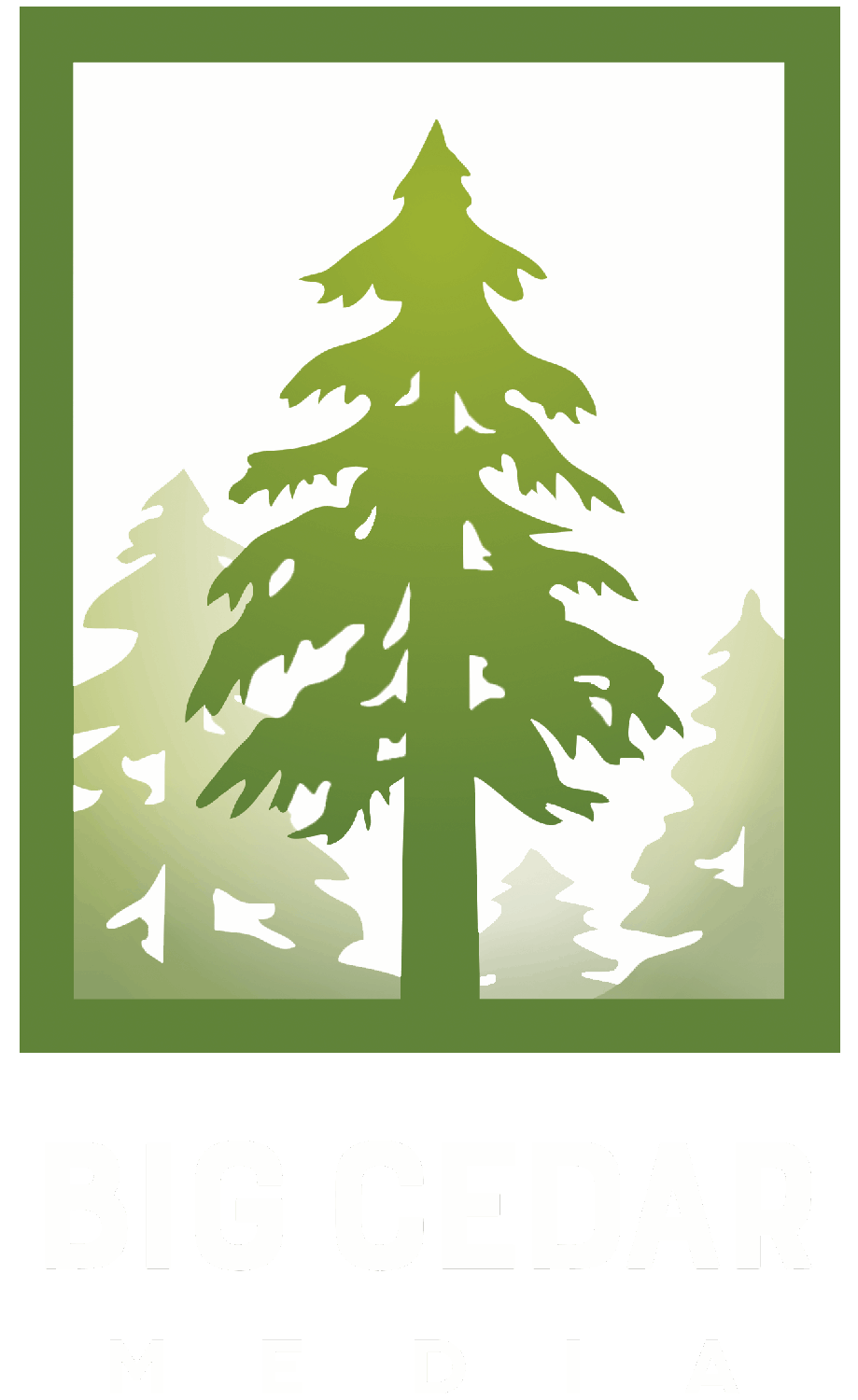Through the Darkness
From the 10,915-foot summit of Emigrant Peak, serrated mountaintops loom in all directions. Far below, the great Yellowstone River flows among green cottonwood trees as it cuts through Montana’s Paradise Valley. It’s July and the golden-brown landscape surrounding the river corridor appears brittle and thirsty in contrast to the green, irrigated fields nearby. On the summit and facing the wide-open valley stands Lonnie Bedwell…
Blind athlete Lonnie Bedwell climbs Emigrant Peak with his sighted guide Dustin Sene in Montana’s Absaroka Mountain Range.
From the 10,915-foot summit of Emigrant Peak, serrated mountaintops loom in all directions. Far below, the great Yellowstone River flows among green cottonwood trees as it cuts through Montana’s Paradise Valley. It’s July and the golden-brown landscape surrounding the river corridor appears brittle and thirsty in contrast to the green, irrigated fields nearby.
On the summit and facing the wide-open valley stands Lonnie Bedwell, who sports a graying and well-trimmed mustache and black sunglasses. Beside him is Dustin Sene, a local who lives outside nearby Gardiner and offered to guide Bedwell up the mountain that day.
Sene describes the named mountain ranges: Crazy Mountains to the north; Tetons to the south; Absarokas to the east; Spanish Peaks to the west.
From this vantage, Montana holds true to its name and Bedwell breathes deeply the cool mountain air. The sun is high in the sky and in between wind gusts against his face he hears the unpolluted silence that high places offer.
Bedwell’s senses are heightened atop this lofty perch. All save his vision. He can’t see the mountain peaks, valley or wildness around him. Bedwell has been blind for 20 years.
But this doesn’t slow down the 51 year old, who in 2015 was named among National Geographic’s Athletes of the Year. Bedwell is a kayaker who, as a veteran of the Persian Gulf War, now introduces other blind vets to the sport. On this Montana summer day, however, he wanted to climb the prominent mountain he’d heard so much about.
TRR founder Joe Mornini at the outtasight clinic.
Joe Mornini is tall and especially fit for his 63 years. His former career is evident when his voice booms across the yard as he shouts dry-land kayaking instruction to Team River Runner’s Outtasight participants. Mornini retired in 2014 after working 40 years as a Maryland public school teacher and special education program coordinator. He stays active by kayaking the Potomac River three to four times a week and has been doing so for about 30 years.
In the summer of 2004, with the wars in Iraq and Afghanistan well underway, Mornini and his kayak partner Mike McCormick began noticing scores of soldiers recovering from battle injuries at Walter Reed National Military Medical Center just down the road from Mornini’s current home in Rockville, Maryland. By fall, the duo decided to pitch in the best way the knew how: on the water.
“We felt we could outfit and adapt boats for them,” Mornini says. “Get them out of wheelchairs and into paddling.”
Around 2.5 million service members have deployed to the Middle East since the invasions of Afghanistan in 2001 and Iraq in 2003. To date, roughly 52,500 service members have been physically wounded in action and out of those, 1,645 came home missing limbs.
The partners founded Team River Runner in September 2004 with the vision to create a healing and empowering program for veterans. “Moving is living,” Mornini says. “Most individuals in the military love the outdoors, they love adventure and they love excitement. Kayaking involves all three of those.”
Currently TRR has over 55 chapters in 31 states, and during its 12-plus years has worked with more than 10,000 veterans. Mornini’s mantra is “butts in boats,” and he often visited injured vets at the Walter Reed hospital to chat with them about his program.
It was at Walter Reed in 2005 when U.S. Army infantry veteran Mackay Mathiason urged Mornini to start a program in Mathiason’s home state of Montana. With few rocks choking the rapids and numerous access points, Mathiason said the Yellowstone River was the ideal waterway to learn basic kayak skills. The program that followed aligned sighted wounded-veteran guides with their visually impaired comrades.
“That is the ultimate act of trust: sending [blind kayakers] down a class three [rapid] on your voice commands,” says Mathiason, who today lives in Billings, Montana, and runs a custom metal fabrication shop with his wife, Leslie. “Once you establish that trust, the rest is cake.”
TRR participants learn how to roll in a pond before hitting the Yellowstone River.
In 2010, the current TRR Outtasight Clinic was born, and Mornini discovered the kindness of area residents. “The Paradise Valley community is active and engaged in the needs of veterans,” Mornini says. “Word travels fast … and any needs any group or program might have results in support.”
Folks in the communities lining the Yellowstone donate food, time and housing, and hold an annual pig roast fundraiser at the River’s Edge Bar and Grill to keep TRR coming back.
“Among my friends and family in the valley there is extremely strong feelings of support and gratitude for these guys,” says Sene, Bedwell’s guide who was raised in Paradise Valley. “Not only for what they have done and sacrificed for our country but for how they are living their lives today and moving on.”
Blind kayaker Lonnie Bedwell plays in a hole on the Yellowstone River in Montana.
Every July, Lonnie Bedwell packs his kayaking gear, cowboy boots and overalls, and flies to Bozeman, Montana, from his southwest Indiana home in Dugger. Occasionally he boards the plane wearing his lifejacket, just to get a rise out of travelers. A former Navy submariner, Bedwell feels teaching other blind vets to kayak is his duty now.
On May 4, 1997, Bedwell was turkey hunting a mile from his house when his partner accidently shot him in the face, blinding him instantly. The recovery road was long and dark, but with the help of his three daughters Bedwell relearned how to negotiate day-to-day life. A year later, he shot a turkey under his friend’s guidance.
Bedwell first tried kayaking in 2012 at a TRR pool event at the Disabled American Veterans Winter Sports Clinic in Snowmass, Colorado. In July of that year he attended his first TRR Outtasight Clinic and brought a natural athleticism and iron will that caught Joe Mornini’s eye. “Right from the start line he showed no fear and took to kayaking like a duck takes to water,” Mornini says.
It wasn’t long before Bedwell was setting ambitious goals for himself. In 2013, he became the first blind person to kayak the Grand Canyon on the Colorado River, a total of 226 miles. He only swam twice. He paddled the Grand again the following year with sightless adventurer Erik Weihenmayer, who in 2001 became the only blind person to summit Mount Everest.
Then, in 2015, Bedwell traveled with guides to Africa and took on the massive rapids of the Zambezi River. “I like running whitewater just about as much as anything that I do,” Bedwell muses. “It’s the most independent thing that I think I do since losing my eyesight.”
Mike Malarsie recalls the amazement he felt after hearing of Bedwell’s first Grand Canyon trip. “He’s an example setter,” Malarsie says, “not just for people that are blind and visually impaired but for everybody.”
On January 3, 2010, Malarsie was on foot patrol as part of a U.S. Air Force Tactical Air Control Party in Afghanistan, when an Improvised Explosive Device, known as an IED, blew him backward and into a canal. The ambush killed four men in the patrol and Malarsie returned home completely blind.
“When I woke up and heard that they weren’t coming home I knew I had no right to feel sorry for myself,” he says. “I vowed to … live my life as a tribute to them.”
Malarsie had never kayaked before attending the 2016 Outtasight Clinic, but was Eskimo rolling his boat in the pond on day one. As the clinic progressed, so did the vets’ skill levels and in a few days they entered Yankee Jim Canyon, the biggest whitewater they had ever encountered. The roar of the river crashing through the canyon is amplified by sheer Precambrian rock walls, and deafening. The whole experience intimidates new kayakers, even the ones who can see.
“It’s kind of run the whole spectrum of emotions and sensations,” says Malarsie, about kayaking a river blind. “Once I’m in the middle of it, all those sensations are gone and I’m literally just present. I get to the bottom … and feel on top of the world, like I just did something kind of remarkable.”
The Yellowstone River flows with a steady and natural pull, undisturbed for 692 miles. It’s the longest undammed river in the Lower 48 and a highlight of the region. It doesn’t discern between sighted recreationalists and those who see only the scars that war leaves behind. And neither do the residents of Paradise Valley.
“When I think about that community,” Bedwell says, “I think about the peacefulness of the valley and the acceptance of the people. They’re constantly thanking us for our service and they never treat us like we’re blind.”
The Outtasight Clinic, which now has branches in Florida, Michigan and North Carolina, is a platform for recovery; a program for personal growth. For a moment in time, a kayak and a river offer veterans freedom from their dark worlds. Carried by the Yellowstone’s wild and free current, these vets push into the darkness one paddle stroke at a time. At the takeout, their grins and stories shatter misconceptions of what is possible.
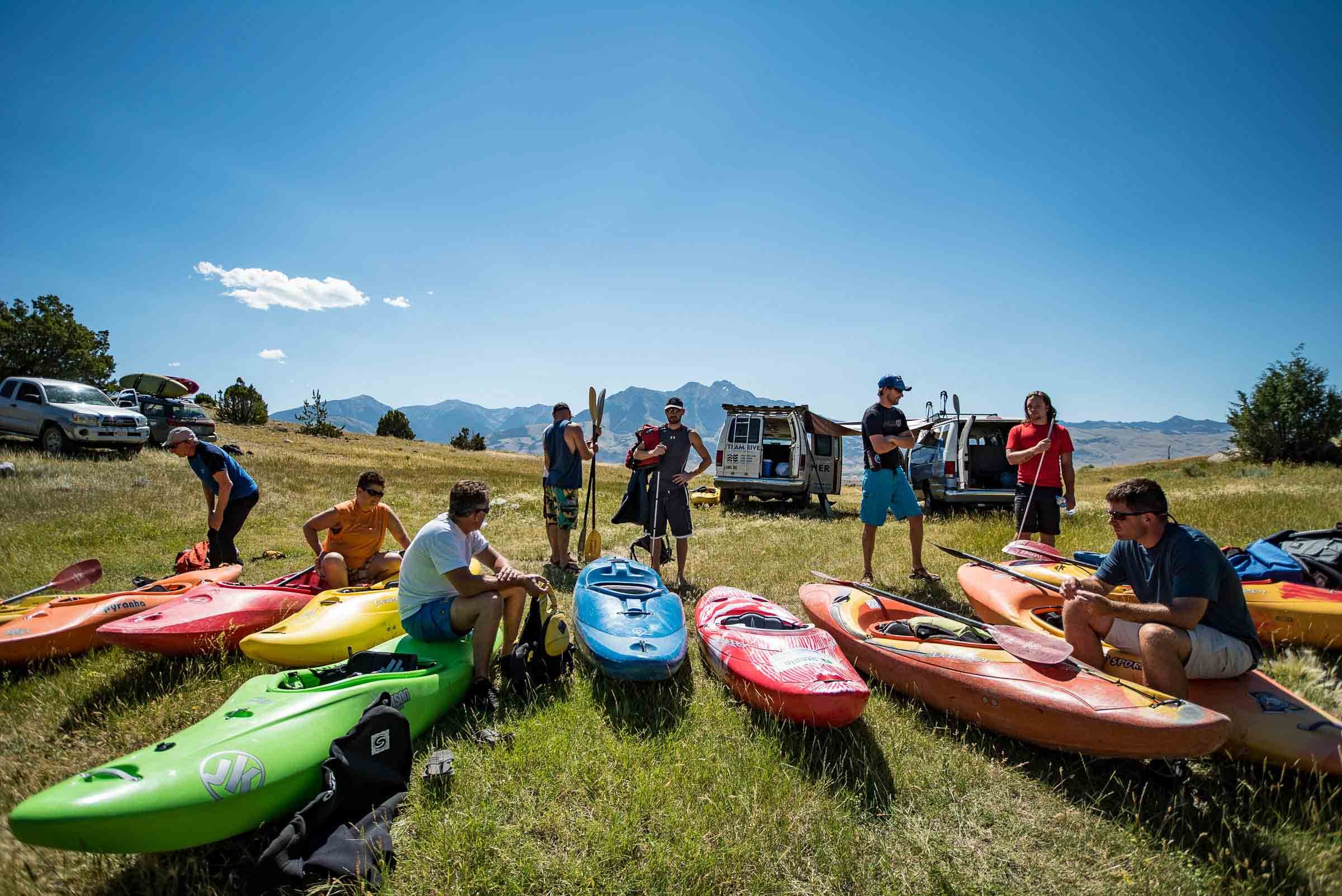
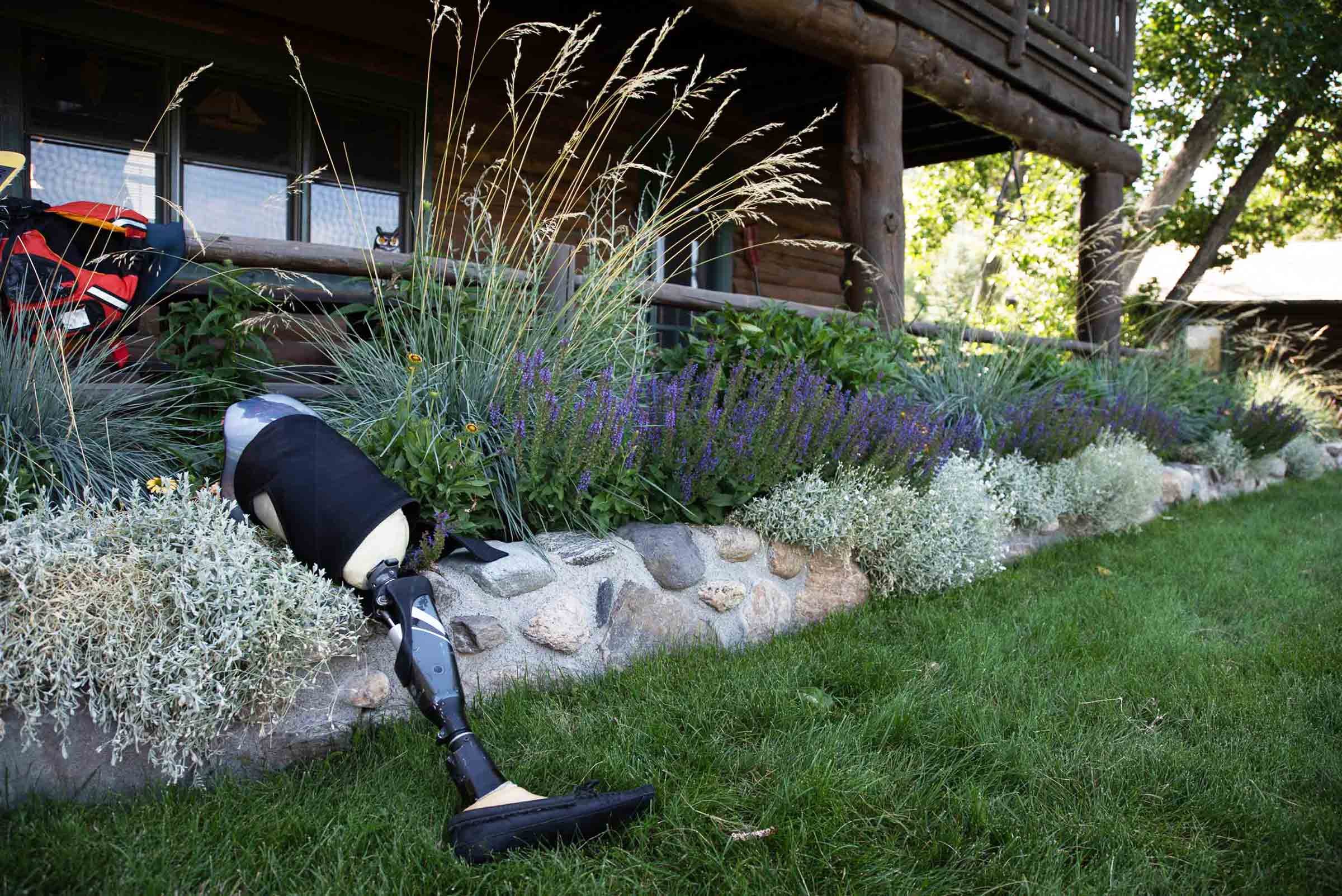
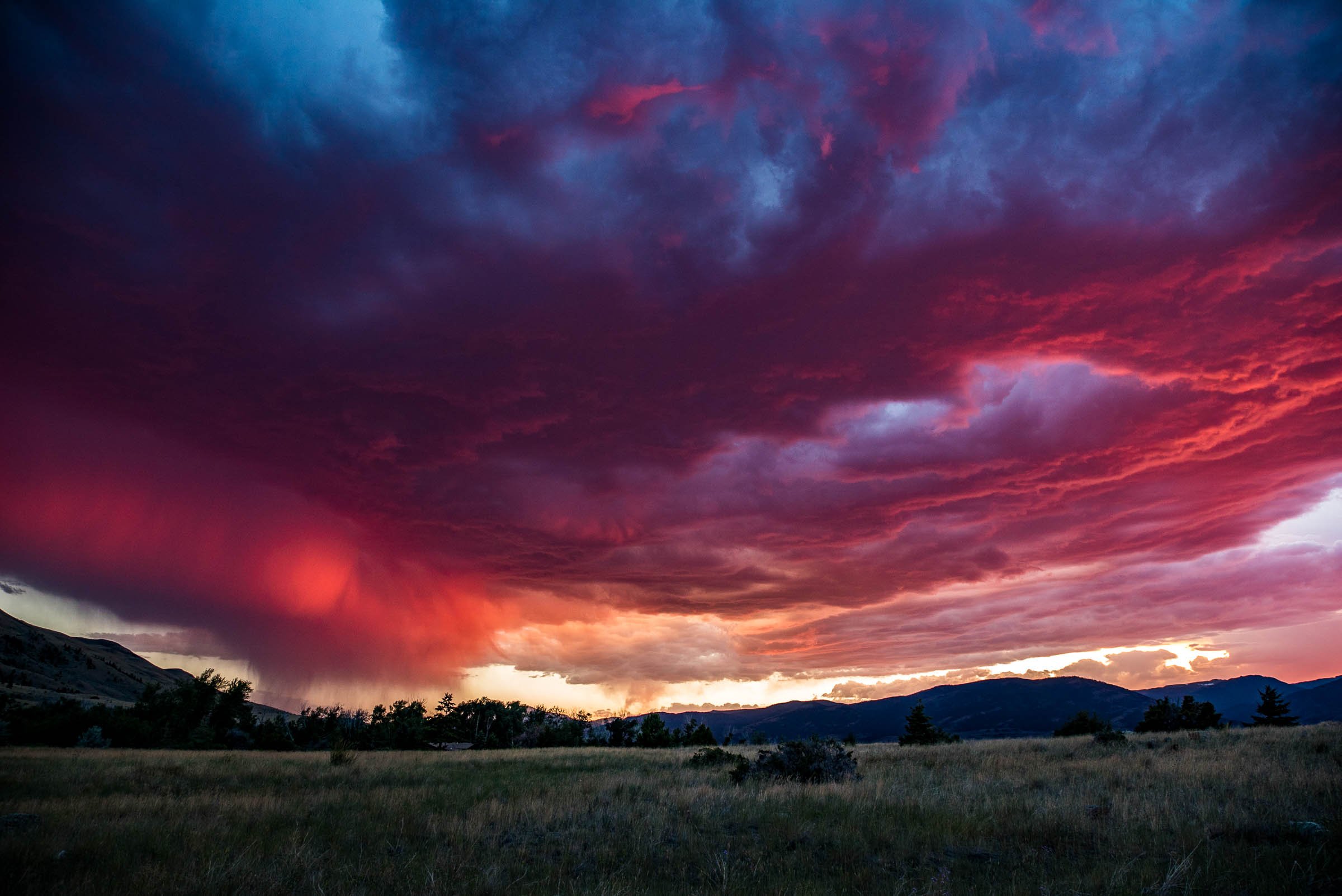
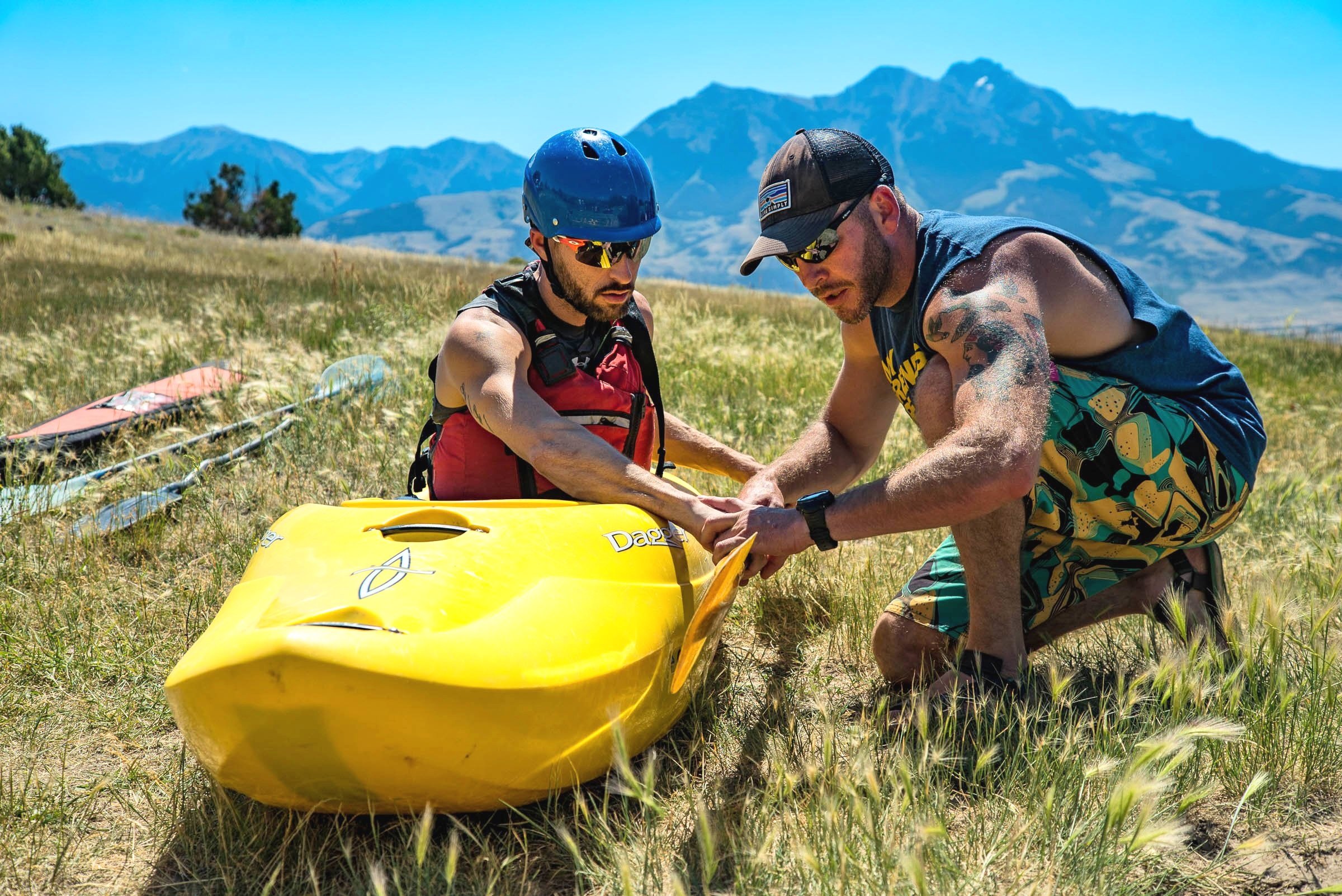
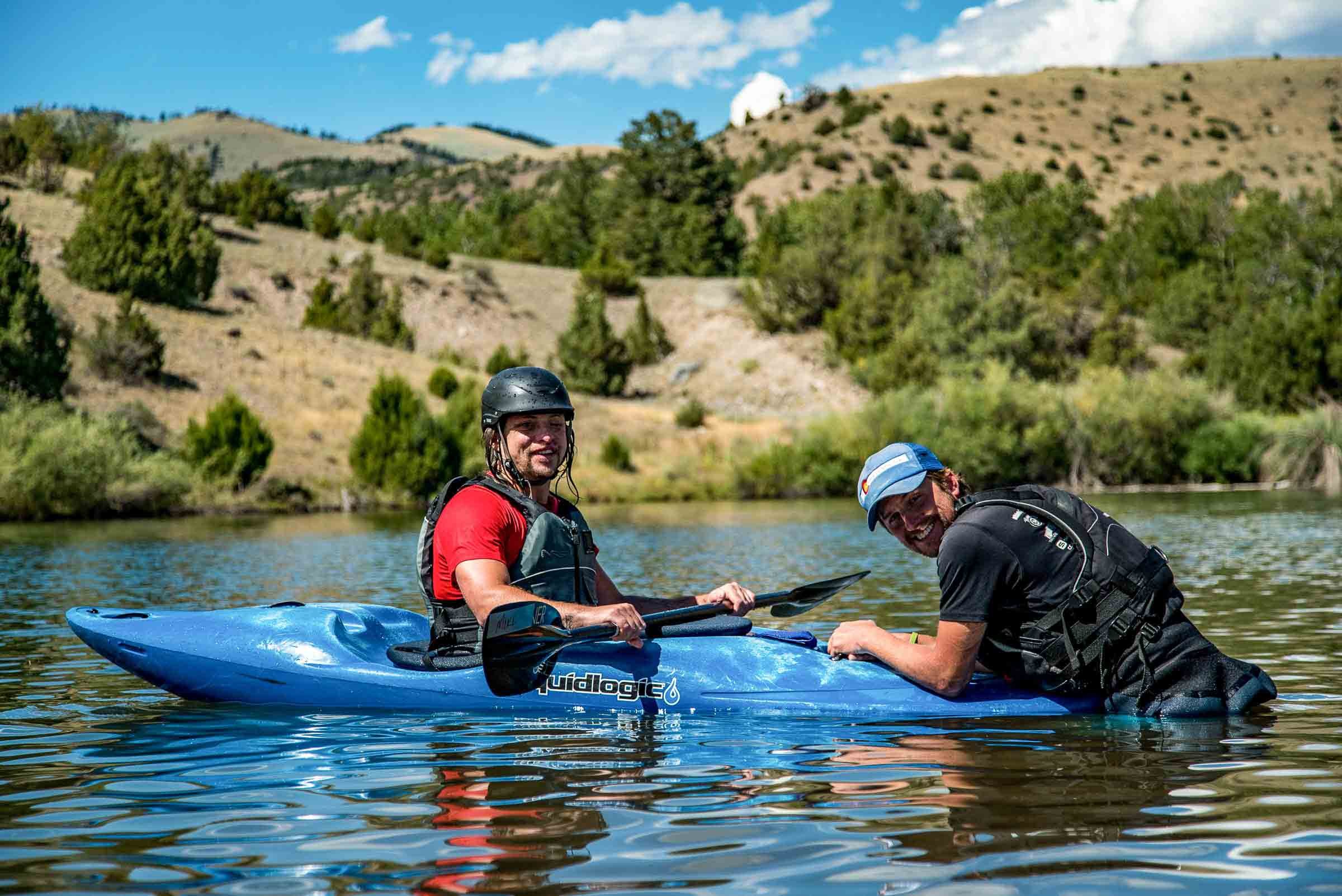
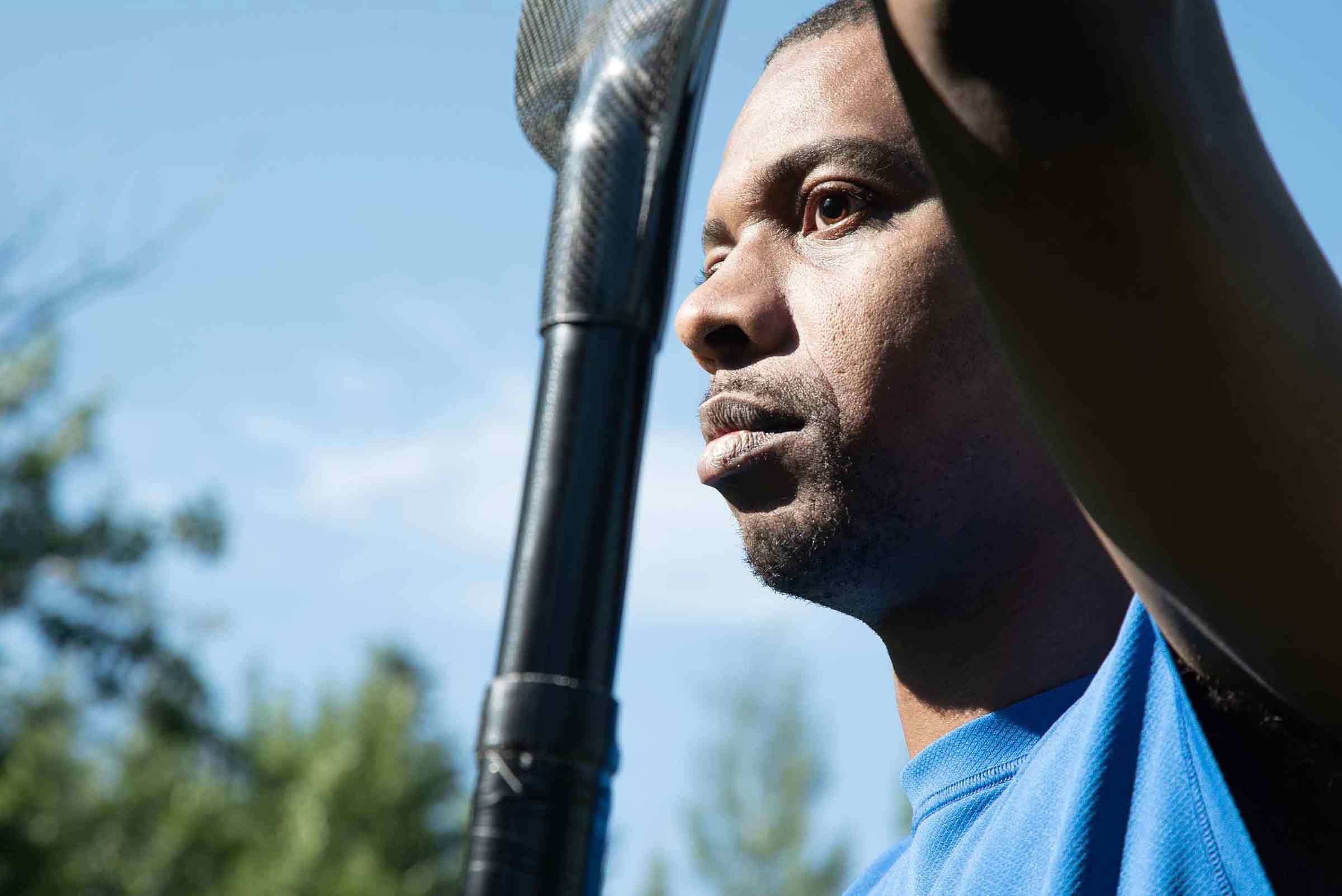

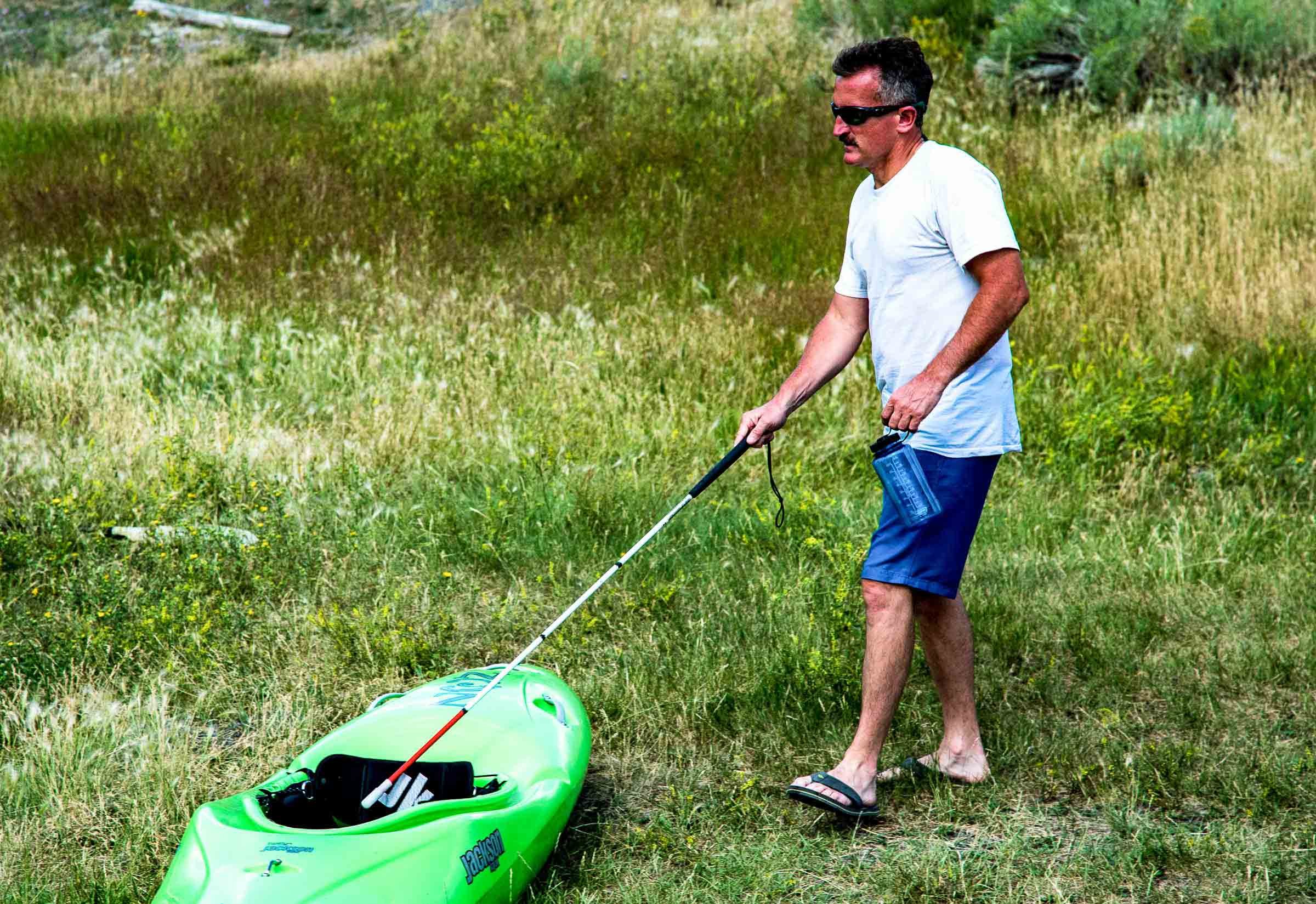
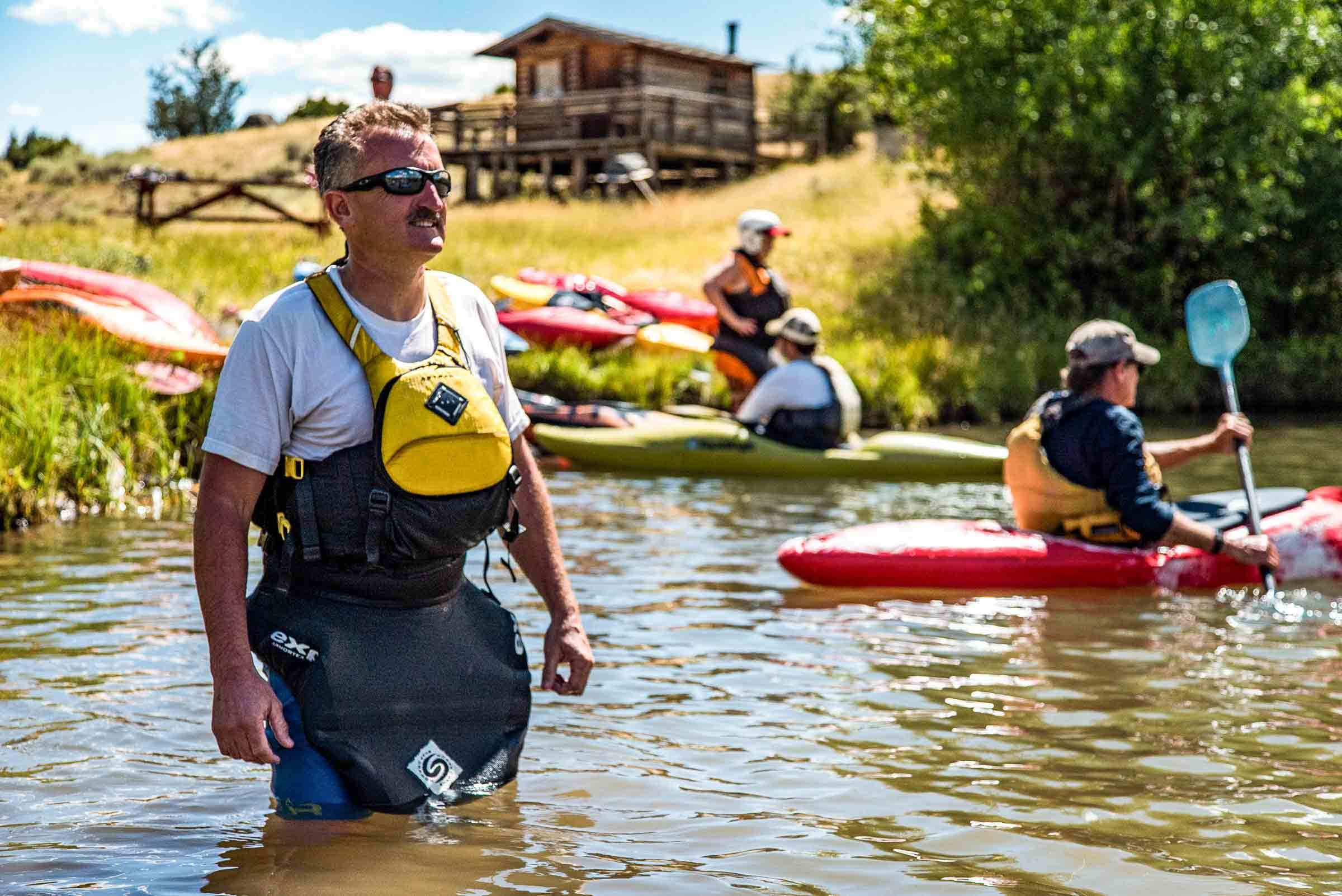
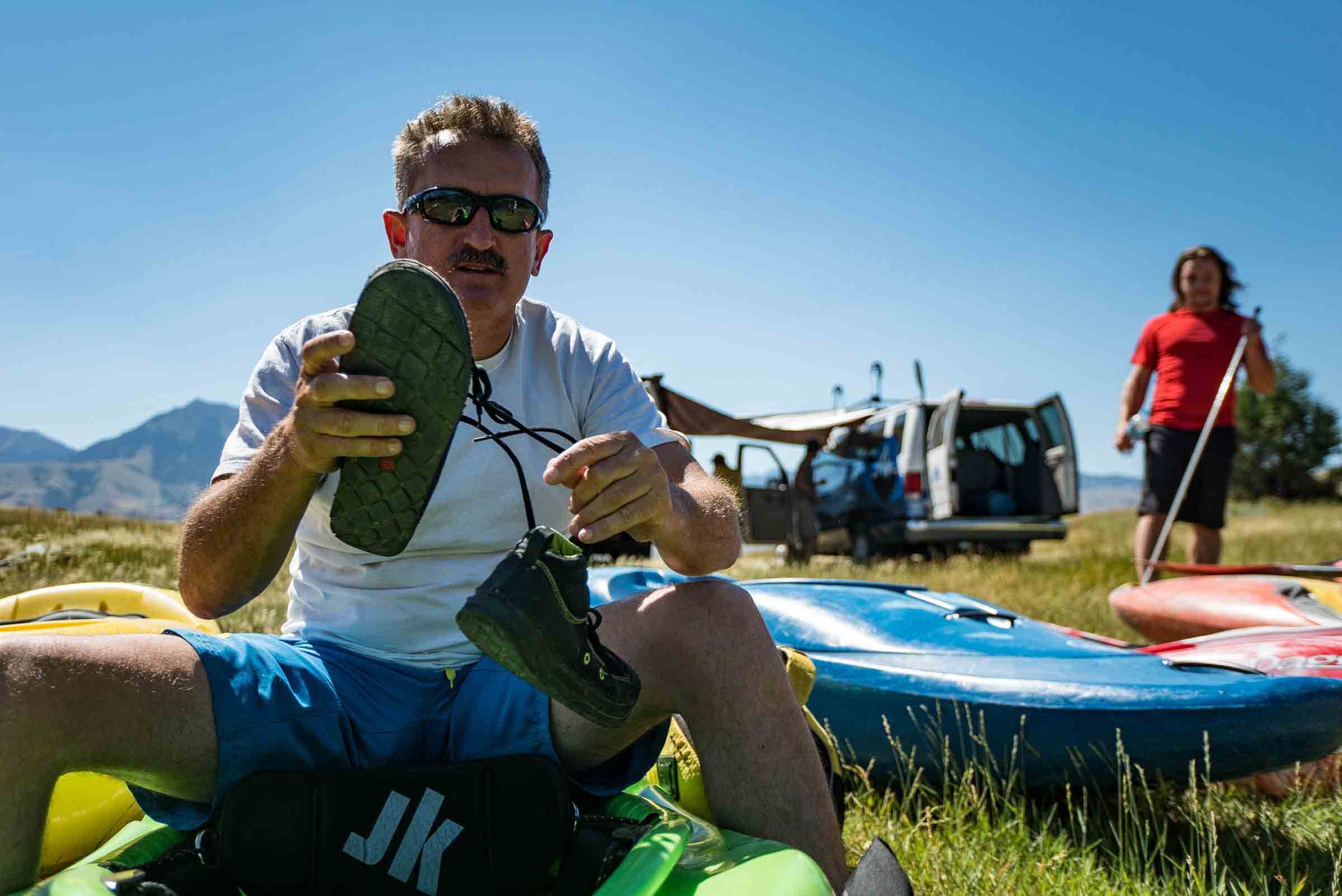
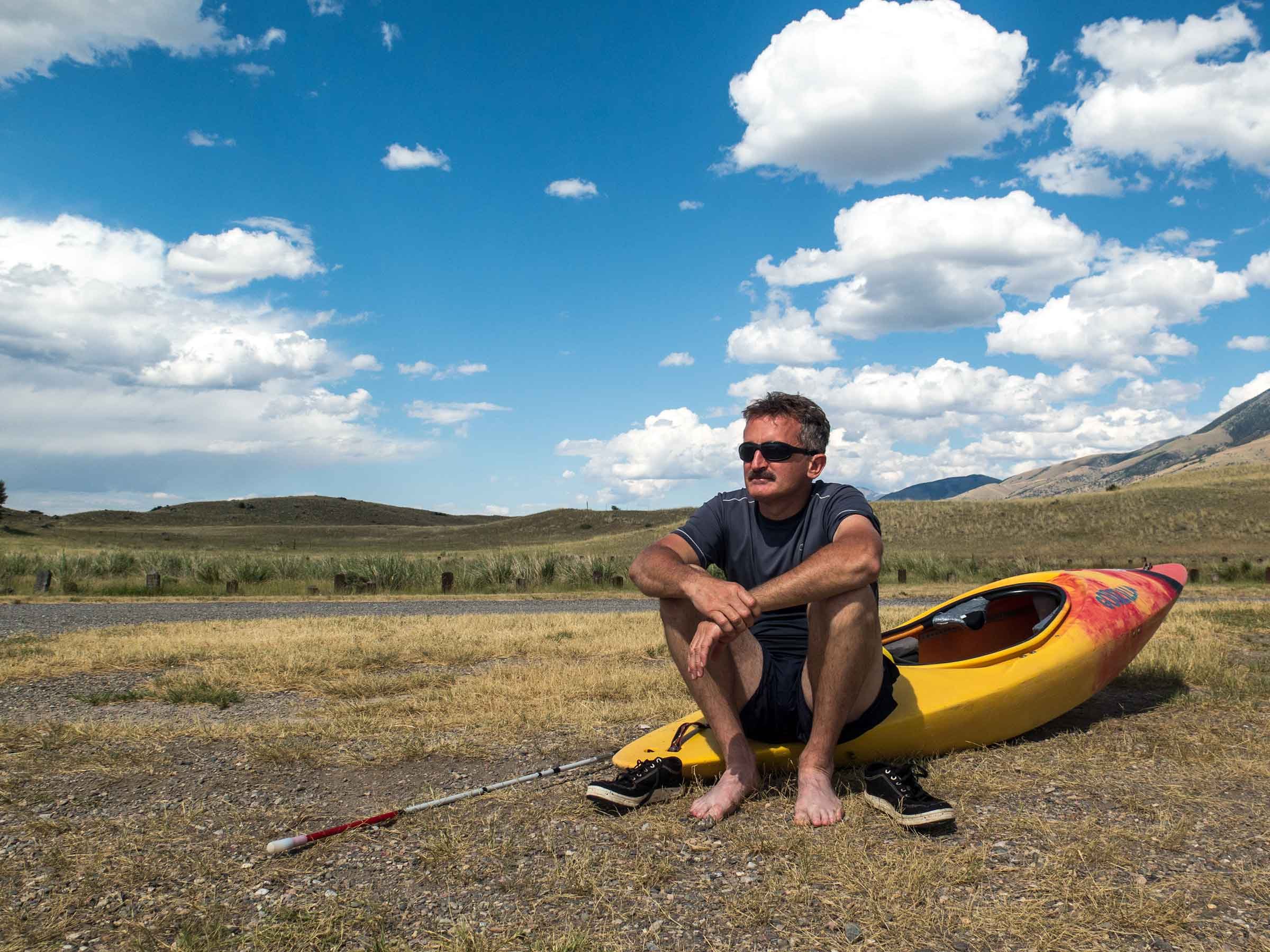
Bird Research
About seven miles east of downtown Boise, as the hawk flies, stands Lucky Peak and the Intermountain Bird Observatory’s (IBO) main research site. On a bare ridge sits a small shack and from late August through October the sky above is active with thousands of southbound raptors. From the hidden confines of the wooden blind, researchers sit undetected, patiently waiting to capture some of these magnificent birds of prey.
About seven miles east of downtown Boise, as the hawk flies, stands Lucky Peak and the Intermountain Bird Observatory’s (IBO) main research site. On a bare ridge sits a small shack and from late August through October the sky above is active with thousands of southbound raptors. From the hidden confines of the wooden blind, researchers sit undetected, patiently waiting to capture some of these magnificent birds of prey.
Having called ahead, my friend, Terri Gibbs and I were excited to see them up close. As we approached the structure, we were suddenly stopped by a man’s voice coming from a dark slab of window, cut from the plywood. I quickly looked around, hoping I hadn’t thwarted a potential capture.
“That’s Jay,” Terri said.
Off to my right and on the ground a subtle movement caught my eye. A pigeon stood covered in leather body armor, situated carefully as bait, behind a tall net barrier.
Thirty seconds later Jay waved us forward and we entered the blind.
We were met by volunteer Robin Leonard and IBO Research Biologist Rob Miller. Next to Rob sat Research Director Jay Carlisle who has a Ph. D. in Biology studying songbird migration. For twenty years Jay has been a part of IBO, a non-profit research branch of the Department of Biological Sciences at Boise State University. During the fall migration Jay traps raptors a couple times a week. “It’s one of my favorite places on earth because of the birds,” Jay says about Lucky Peak. “I don’t have to go to the birds, they’re coming to me.” Through the large north facing window, behind him, loomed Boise Peak.
Every fall, since the start of the IBO in 1993, around 5,000-9,000 raptors of eighteen different species are counted around the Boise Foothills. They follow leading lines, along the Boise Ridge, traveling on wind currents towards the southernmost point at Lucky Peak. And they’re not alone. Owls and songbirds also congregate here, gathering fuel or resting before flying into the large expanse of the Snake River Plain. Lucky Peak is unique in that it offers “around the clock” research for many different bird species throughout the fall.
“If you can catch three or four birds in an hour than you’re doing pretty good.” Jay says about trapping raptors. “It comes in waves.” Rob and Jay patiently scanned the sky.
Suddenly, a Cooper’s Hawk swooped down from its lofty height, lured by false hope of a free meal. They sprang to action and pulled strings attached to the lure bird’s body armor creating movement. The hawk landed and approached the bait, unaware of the bownet trap cocked and ready for action. At just the right second, Jay triggered the trap with impeccable timing. The spring loaded net quickly covered the hawk and Jay ran out to retrieve the captured bird.
The Cooper’s Hawk looked straight ahead with intense eyes, wings fanned out and beak open, boldly posed. Robin attached an identification band to the bird’s leg, took measurements and gathered other important data. Researchers here capture and band roughly 1,000 raptors each fall. On average, about nine of these birds will be recovered at other sites across North America, giving important information on raptor movement, wintering grounds, and even mortalities.
Eventually we moved outside to release the birds. Terri and I gathered around Rob as he educated us on Cooper’s Hawks and I soon realized the IBO is much more than a place that simply captures and bands pretty birds. It’s also a place that helps cultivate an inspiration for the natural world through education and awareness.
“By having a couple thousand visitors every year their eyes open to this highway of raptors migrating by.” Jay says, “I hope that maybe it helps to grow more of a conservation ethic.”
They held the birds out at arm's distance. The hawks quickly leaned forward with wings spread and powerfully lunged into flight. It was fun to think that they could fly to California or, better yet, Mexico for winter. Soon they disappeared into the large expanse of sky above the Treasure Valley.
I left impressed, not only by the fierce beauty of the hawks but also by the passions of the people that study them.
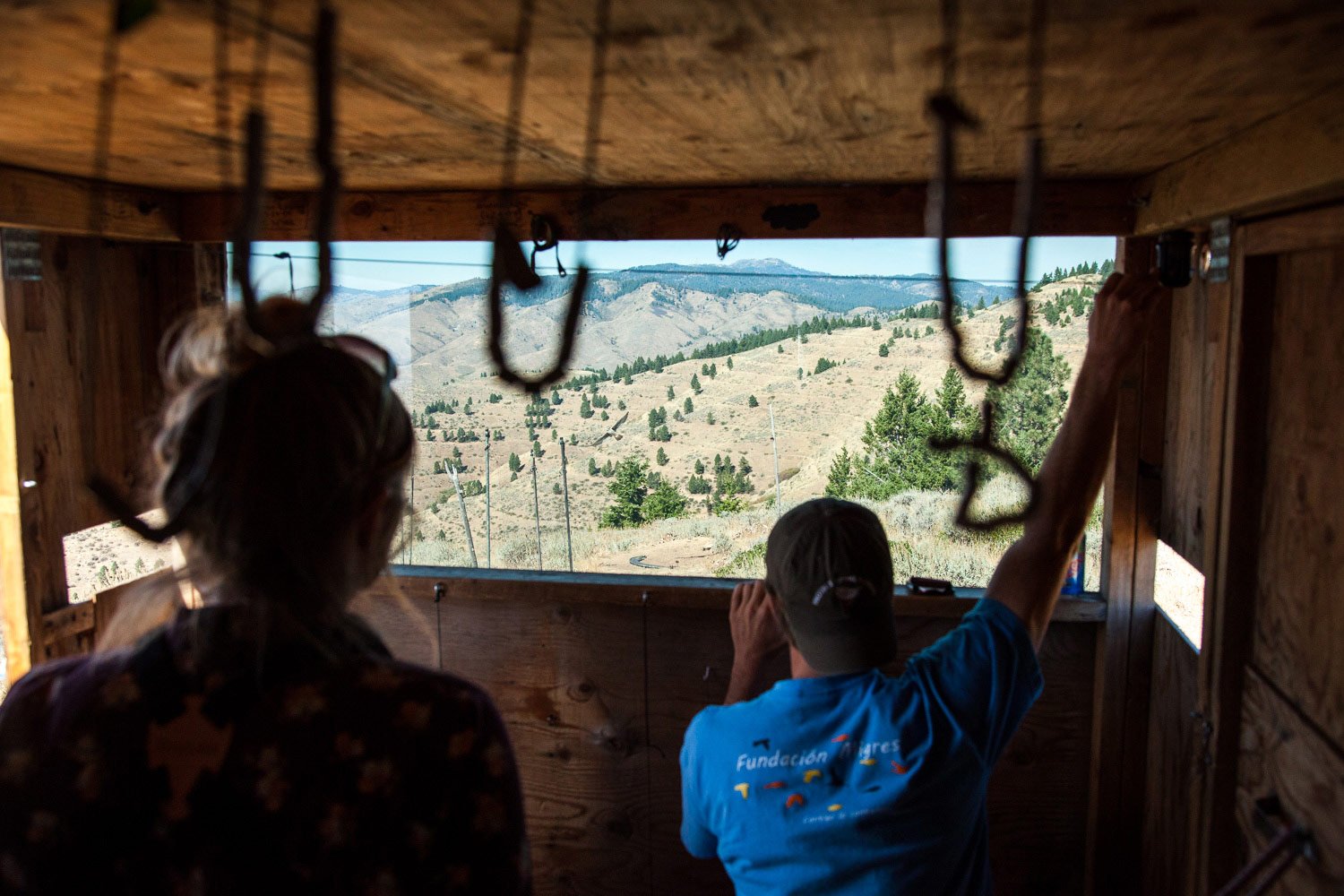
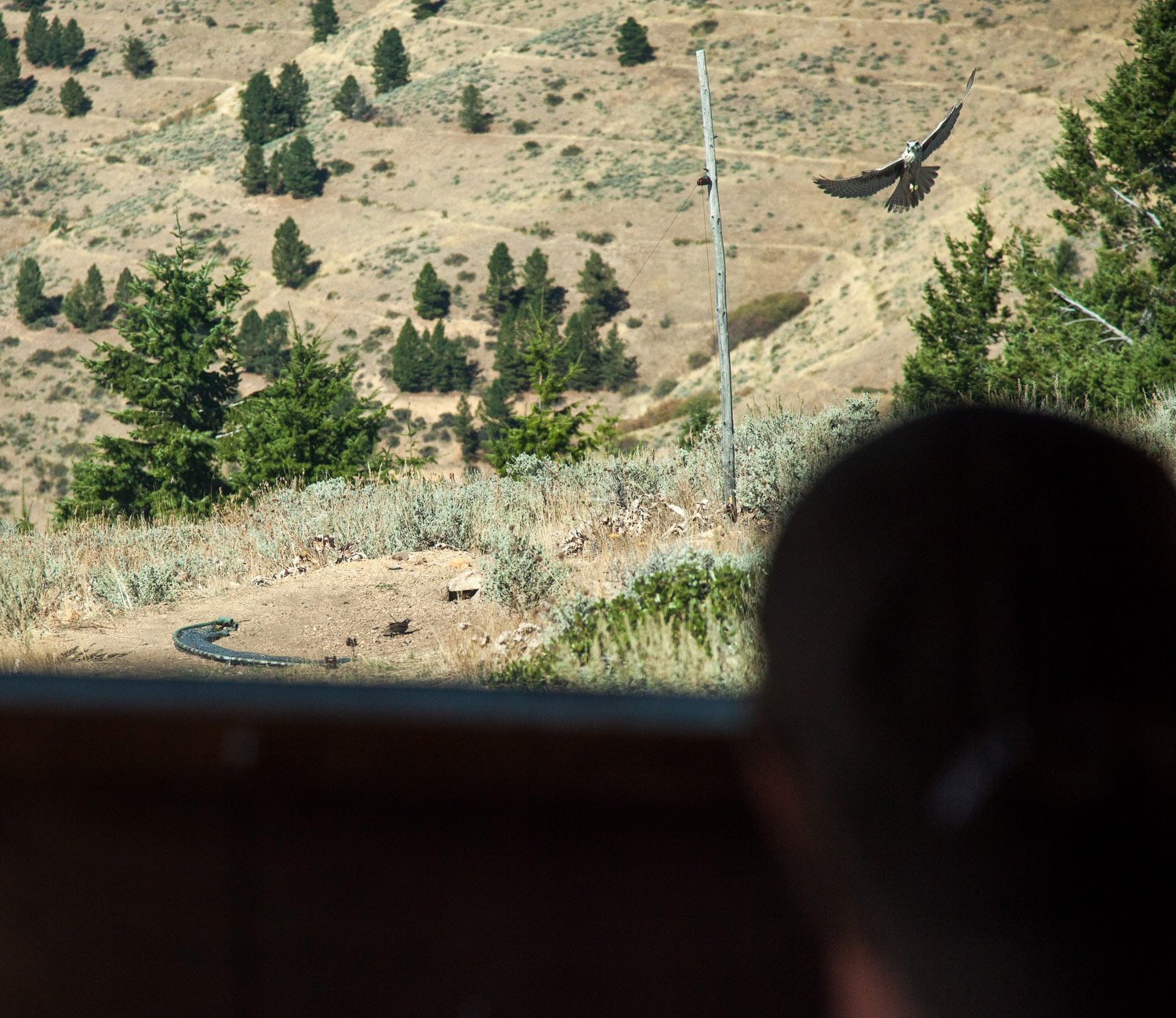
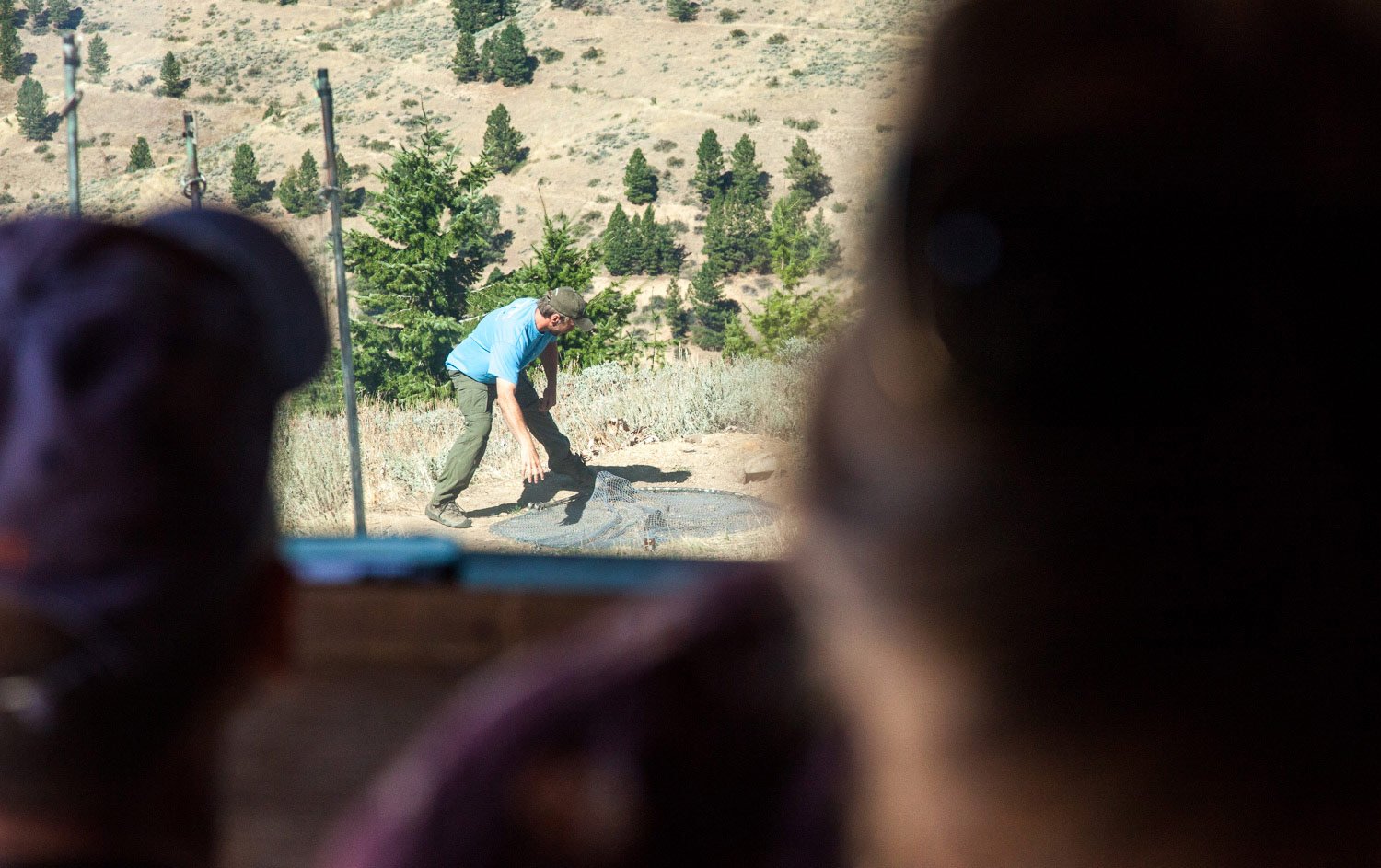
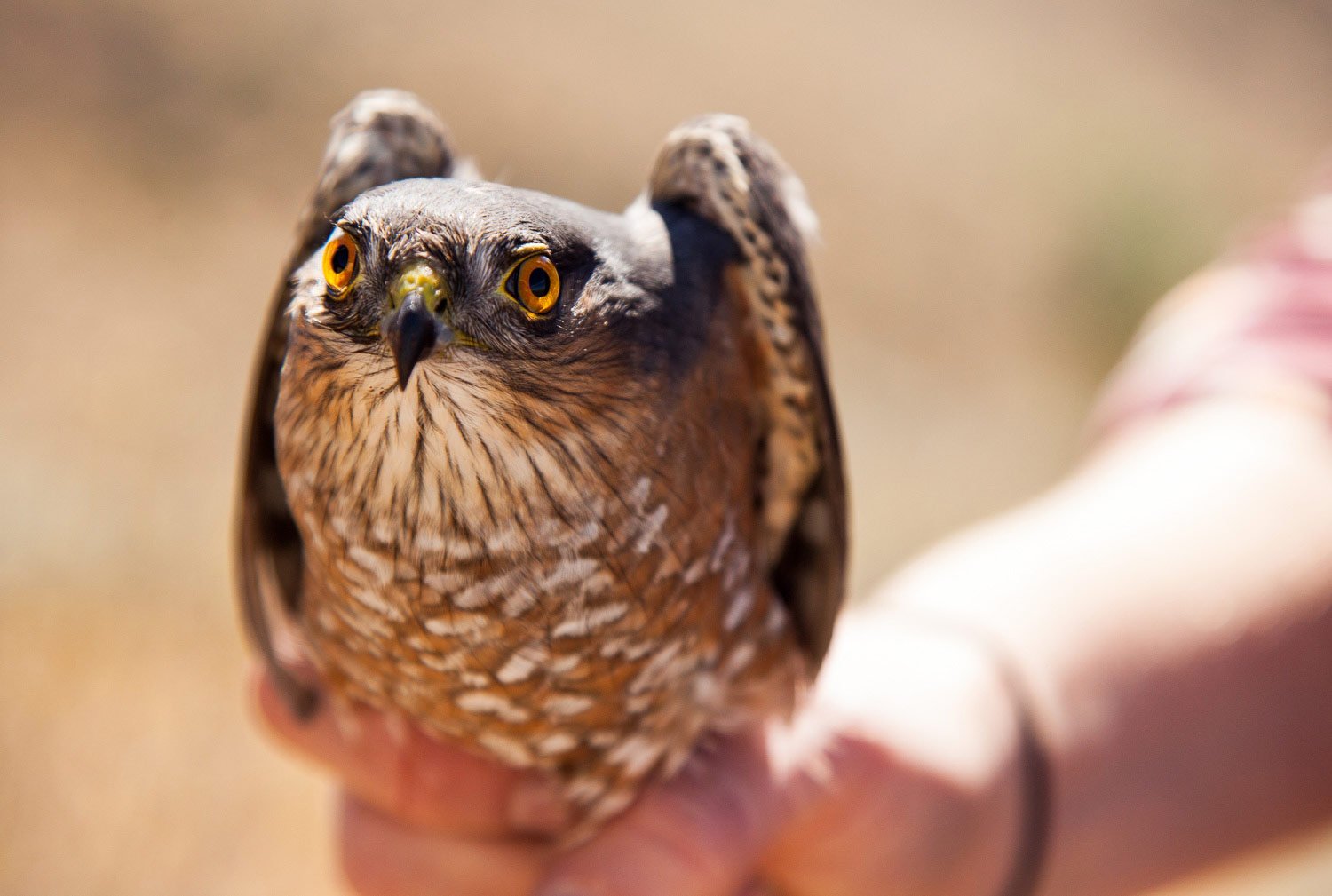
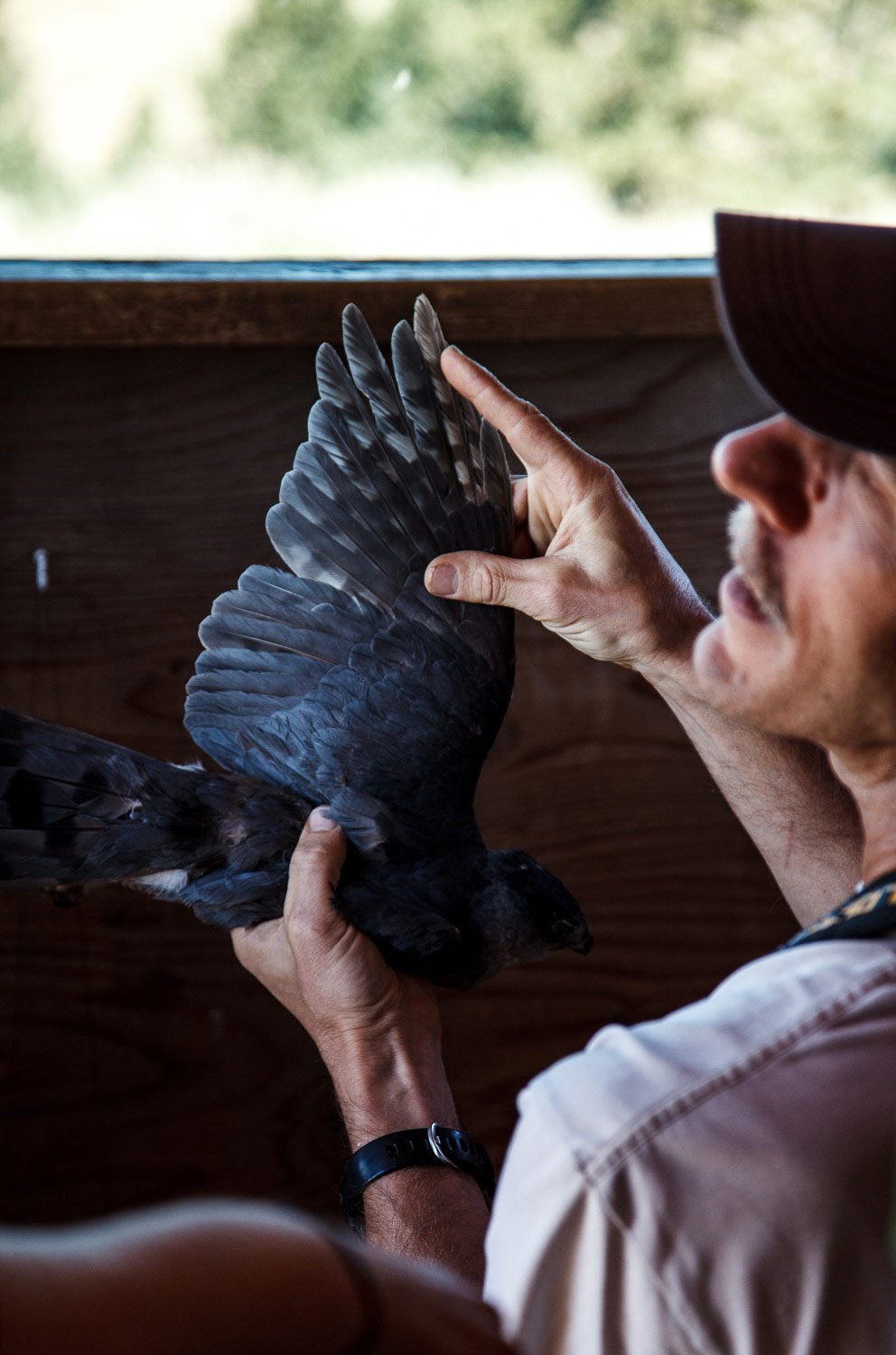


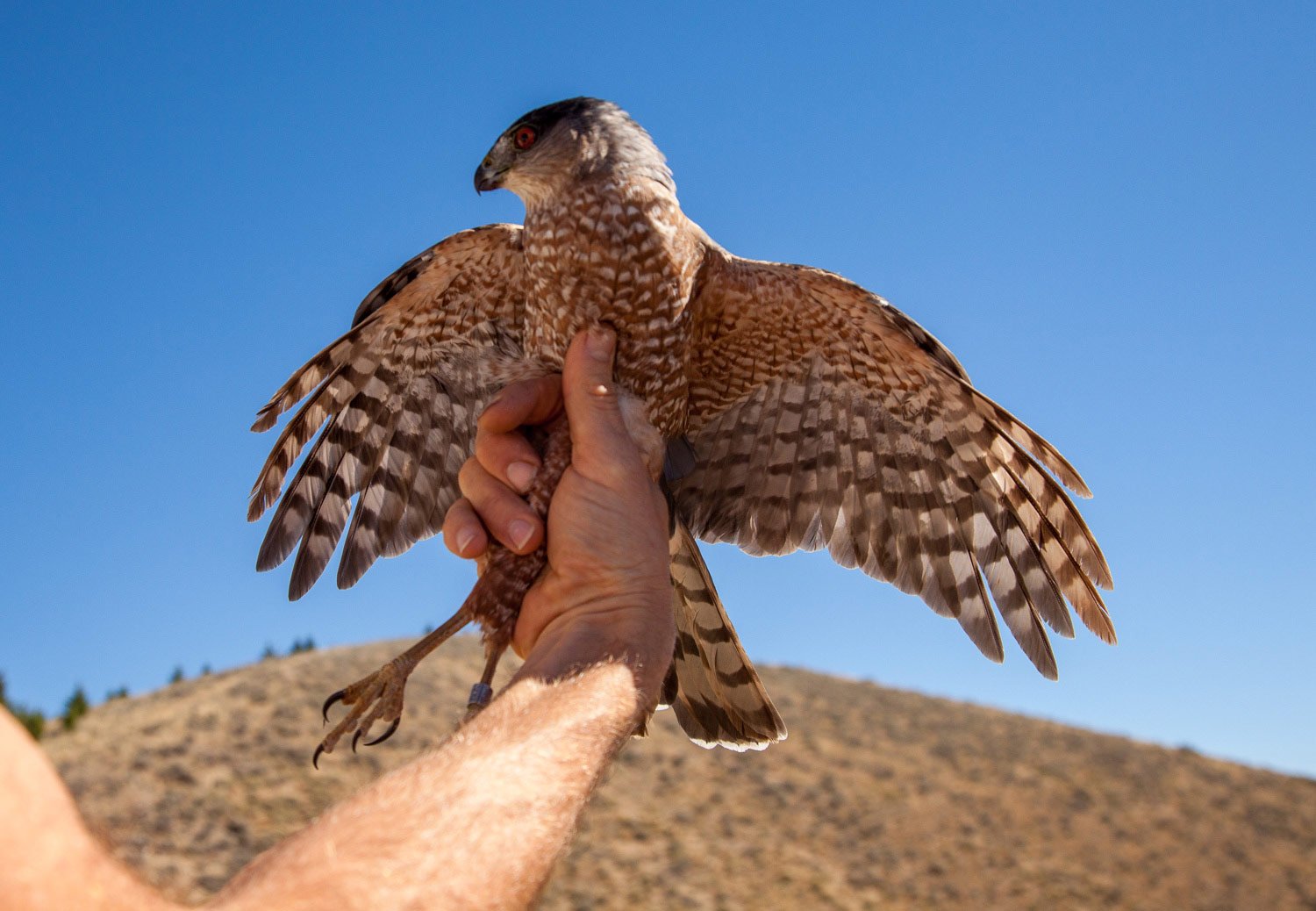
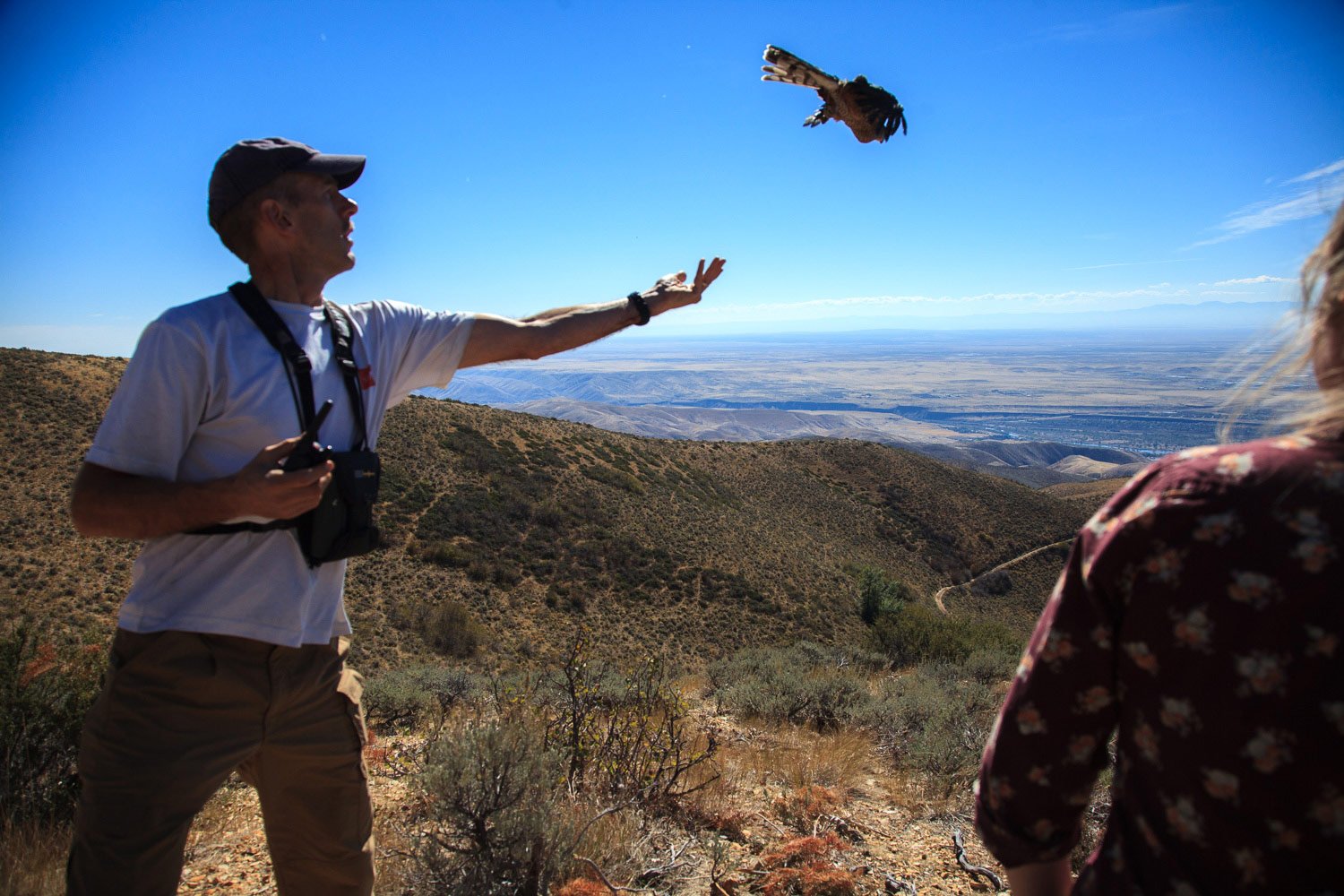
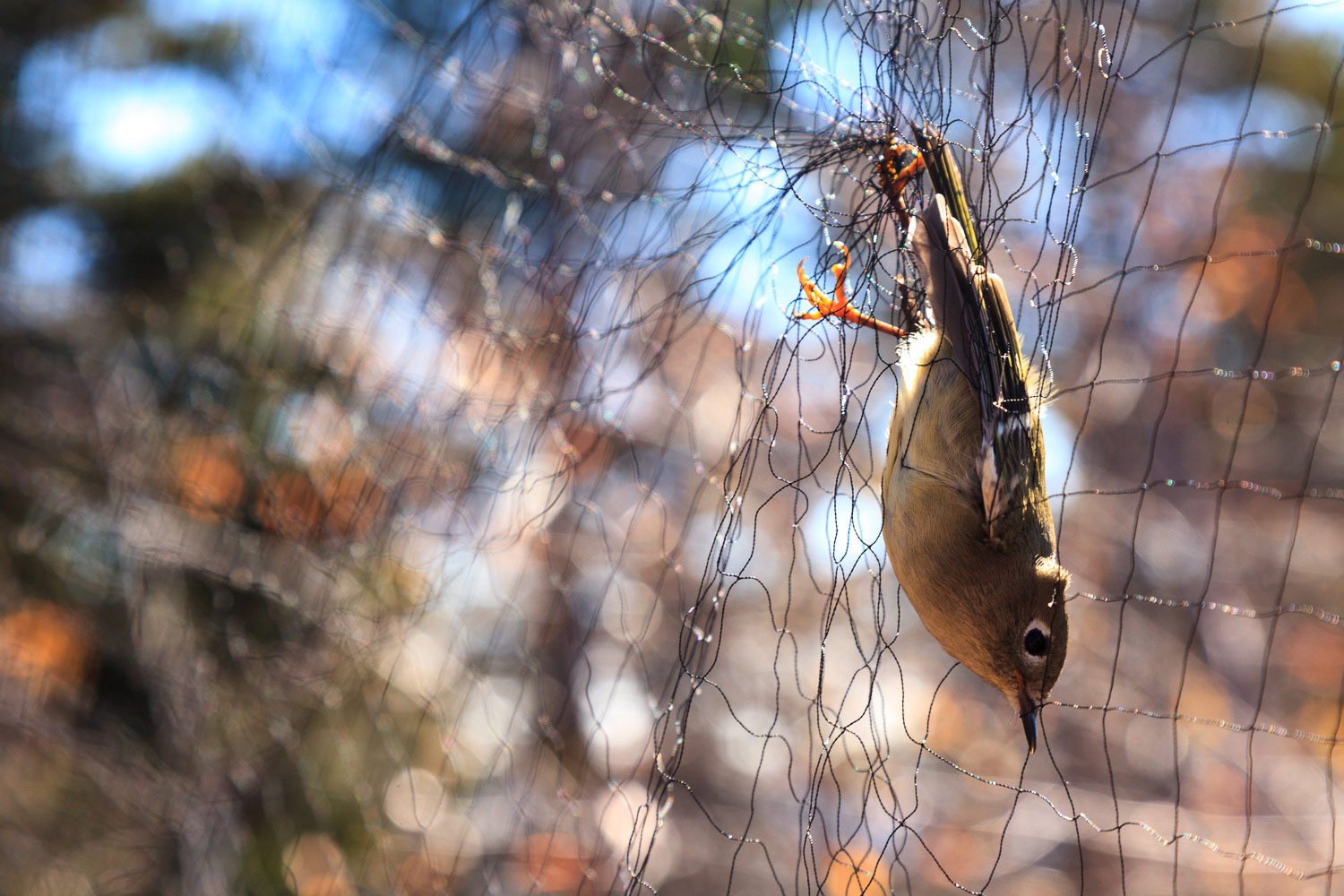
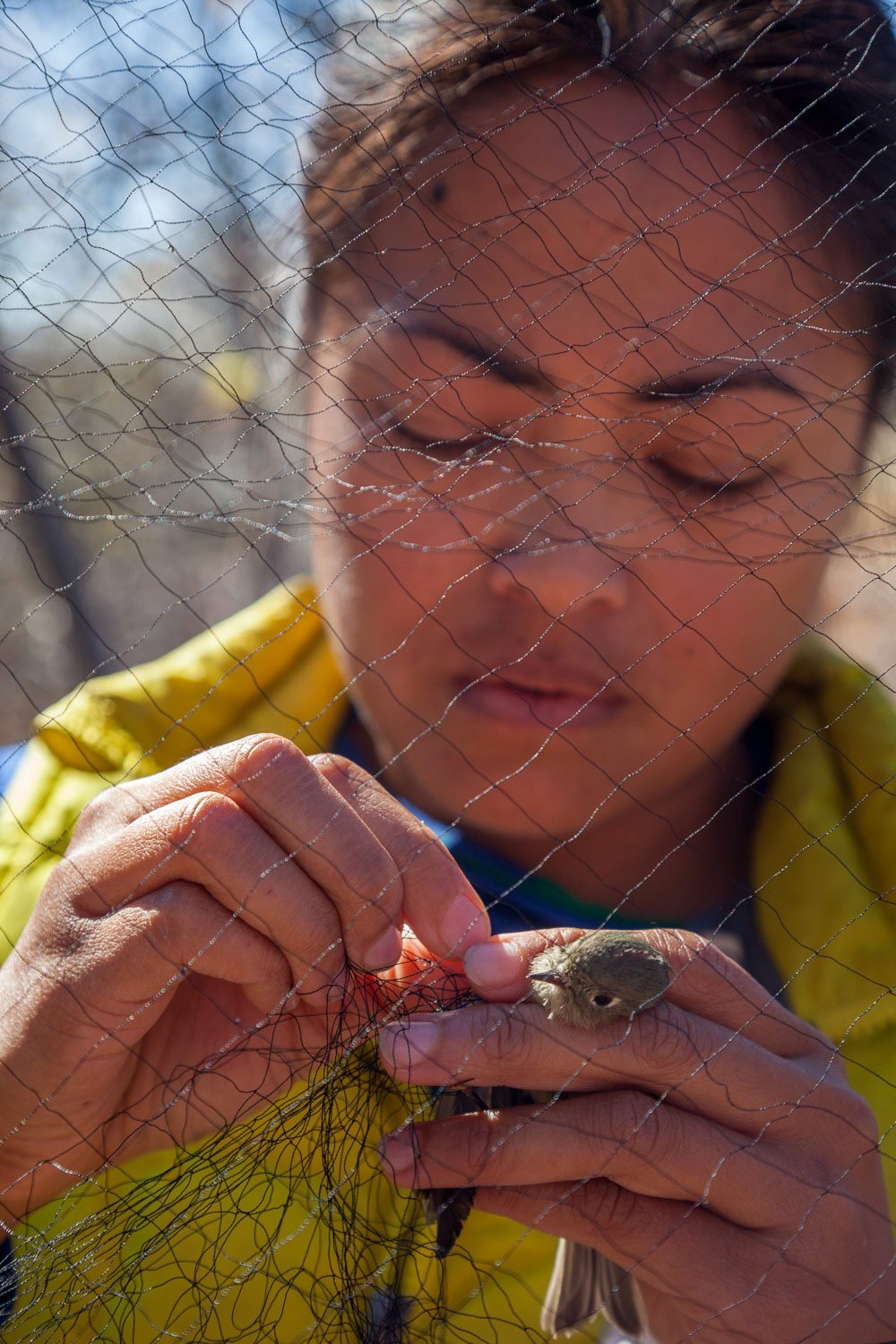

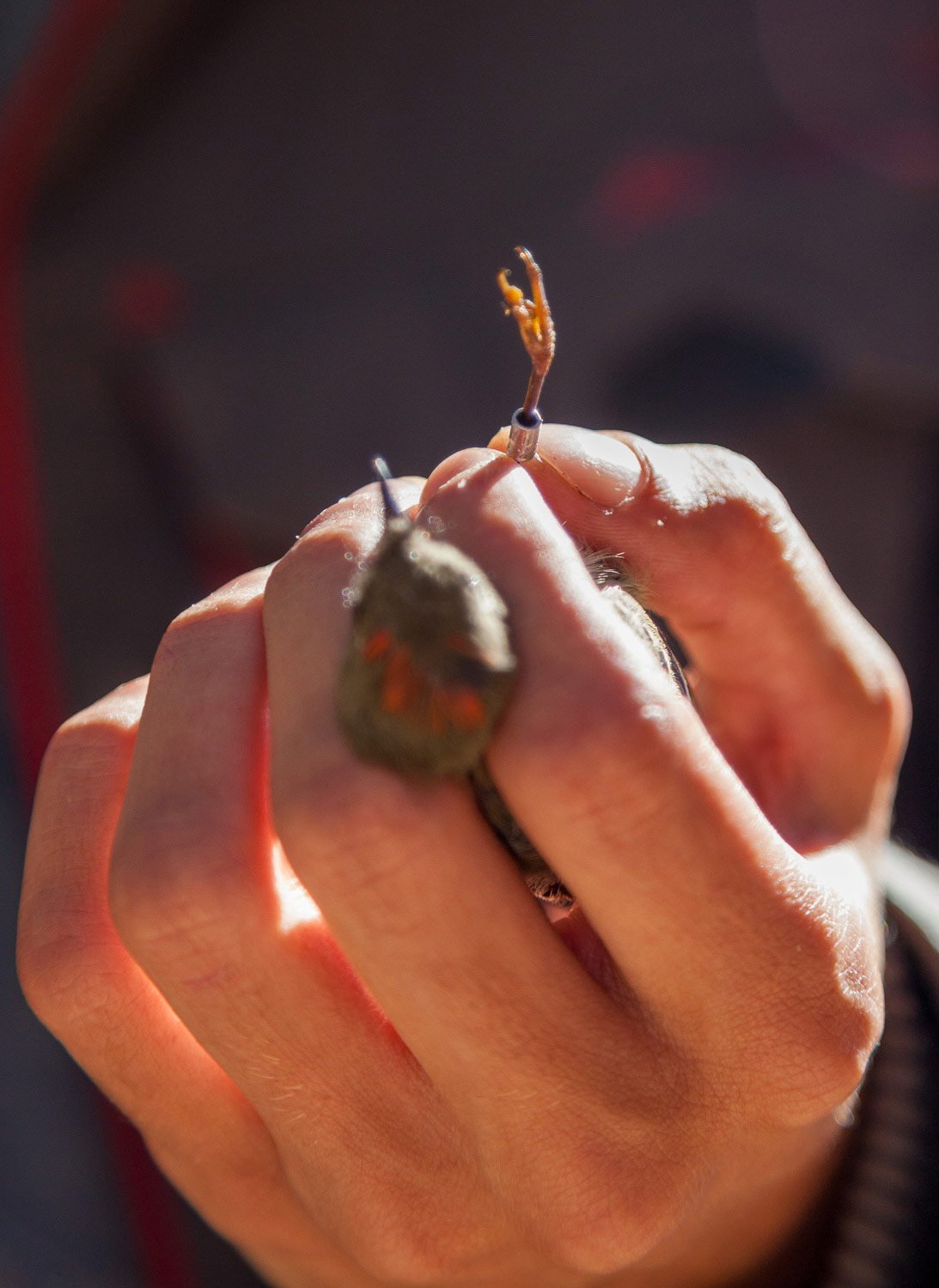
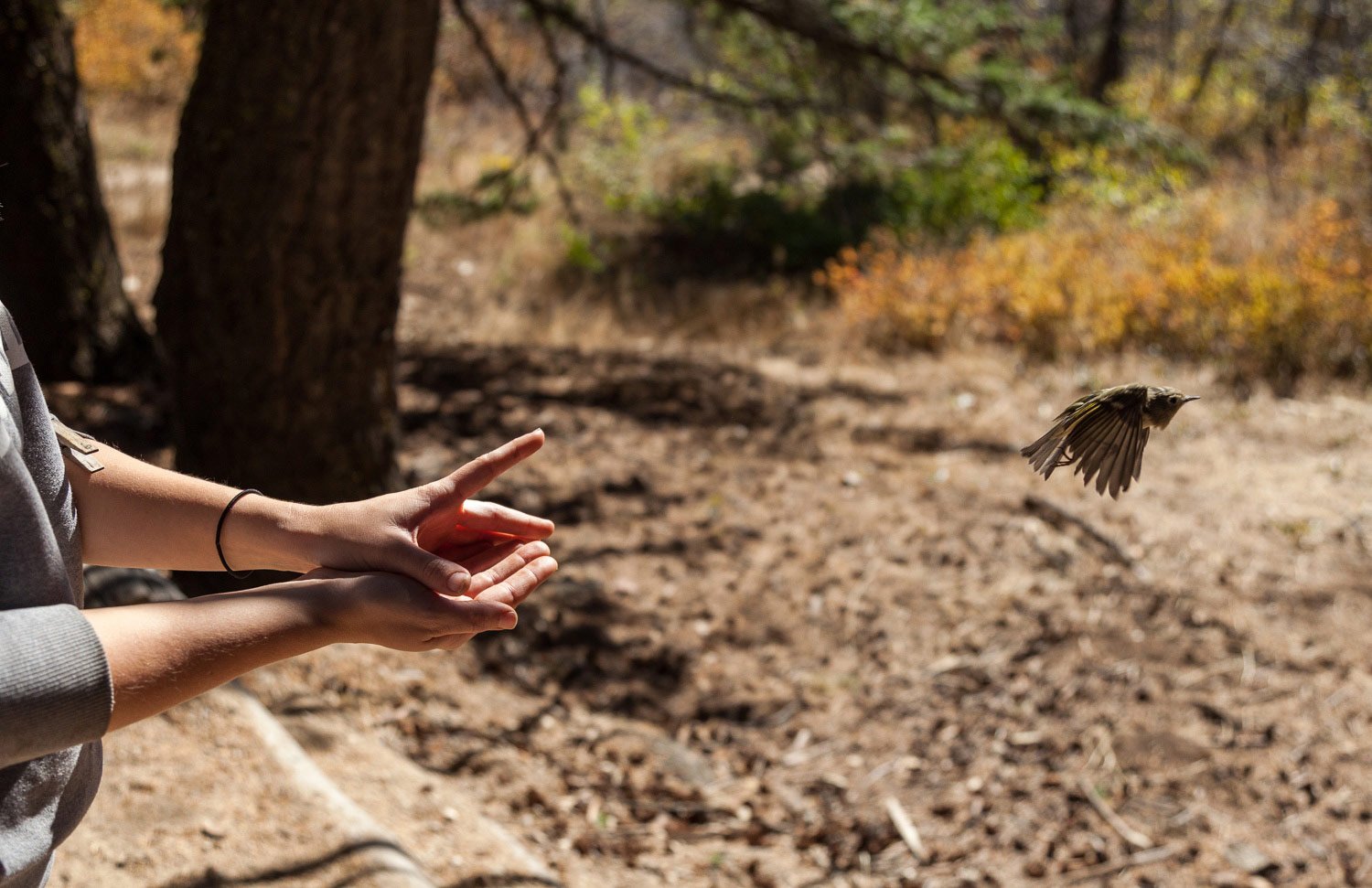
Working the Middle Fork of the Salmon River
During the grey and cold days of past winters, and yet again today, I find myself sitting in my apartment daydreaming about a place and a people I’ve grown to love. This deep admiration started ten years ago when I first experienced a six day river trip down Idaho’s Middle Fork of the Salmon River. I soon traveled from Montana seasonally to work this stunning stretch of water and for eight years now I have accumulated many fond memories.
During the grey and cold days of past winters, and yet again today, I find myself sitting in my apartment daydreaming about a place and a people I’ve grown to love. This deep admiration started ten years ago when I first experienced a six day river trip down Idaho’s Middle Fork of the Salmon River. I soon traveled from Montana seasonally to work this stunning stretch of water and for eight years now I have accumulated many fond memories.
The Middle Fork flows wild and free for 100 miles through the heart of the Frank Church-River of No Return Wilderness. It drops almost 3,000 feet during its trip, crashing through numerous rapids with names like “Pistol Creek” and “Devil’s Tooth.” Its scenery changes from high alpine forest to mountain desert and finishes with a bang as it cuts through a steep rocky gorge named the “Impassable Canyon.” It is a unique trip and a natural treasure.
I often think about those warm sweep boat days bathed in golden light. The sun drops low in the sky and the craft is pulled by a free current. The flying insects are illuminated amongst the tall grass and the pine and fir trees cast shadows across the river. The birds sing with the sounds of the river and water laps the floor of the sweep. Together their voices became harmony to my ears and in that moment I feel truly alive!
I think about the guides around me. They seem to complete this place with their smiling faces and wild-eyes. They are strong, genuine, and friendly. Their lives, in many ways, reflect the wild and scenic river they work. As the season turns to spring they emulate the Chinook salmon and make their way back to the river, year after year.
These men and women come from many backgrounds and range in age and experience. They are the river’s ambassadors sharing its history and stories. Some are artists and musicians and others study the plants and animals of the area. These people are backcountry medics and Dutch oven masters. As river guides they are skilled boatman and they are a crafty and resilient bunch. They are Idahoan.
I think about the coming river season. Soon we will move downriver and gather around a campfire. There will be stories and good food. That night I will sleep under the stars and be filled with gratitude, forever thankful, for a community and a wild river that has carved its course through my life.
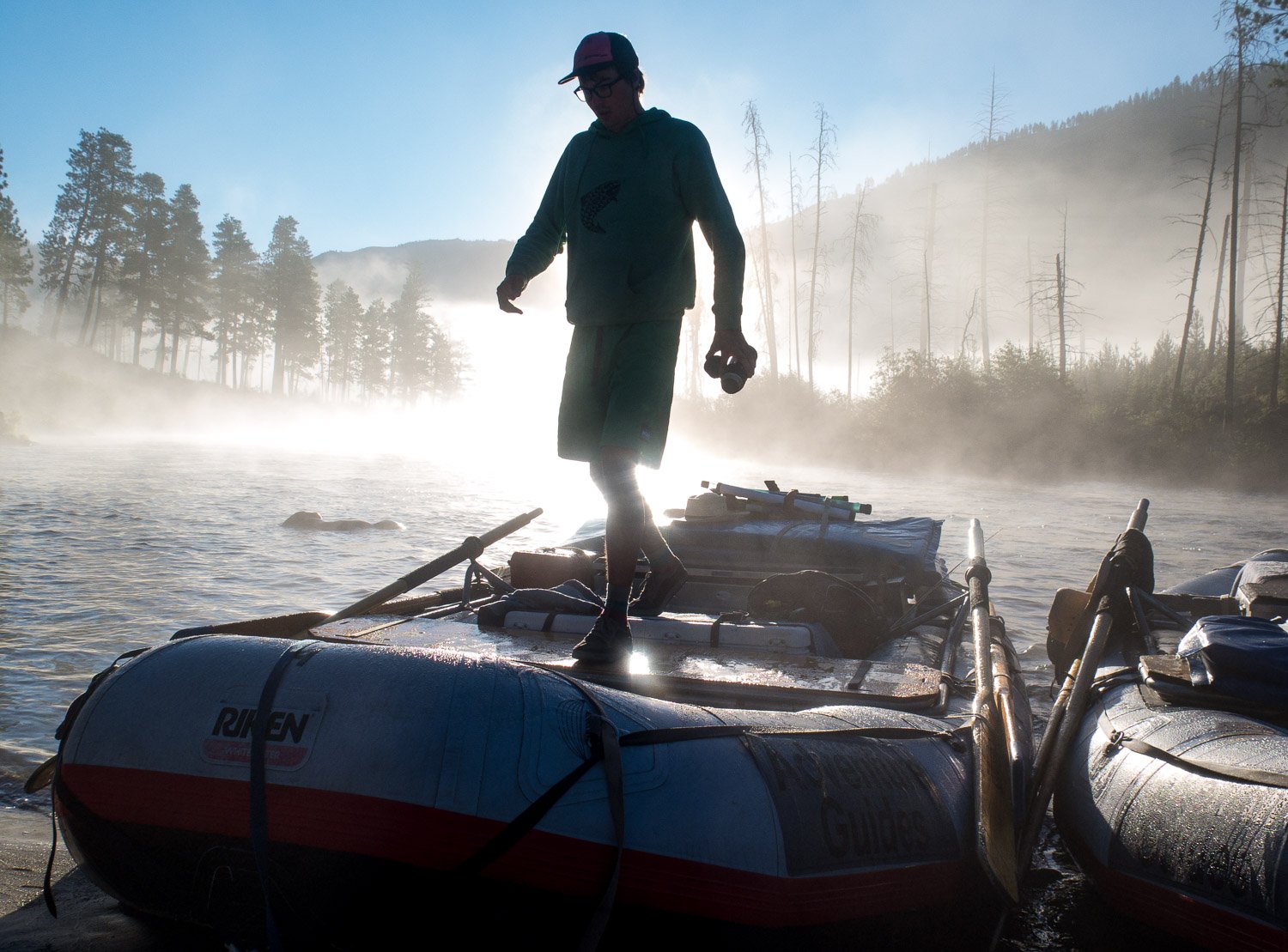

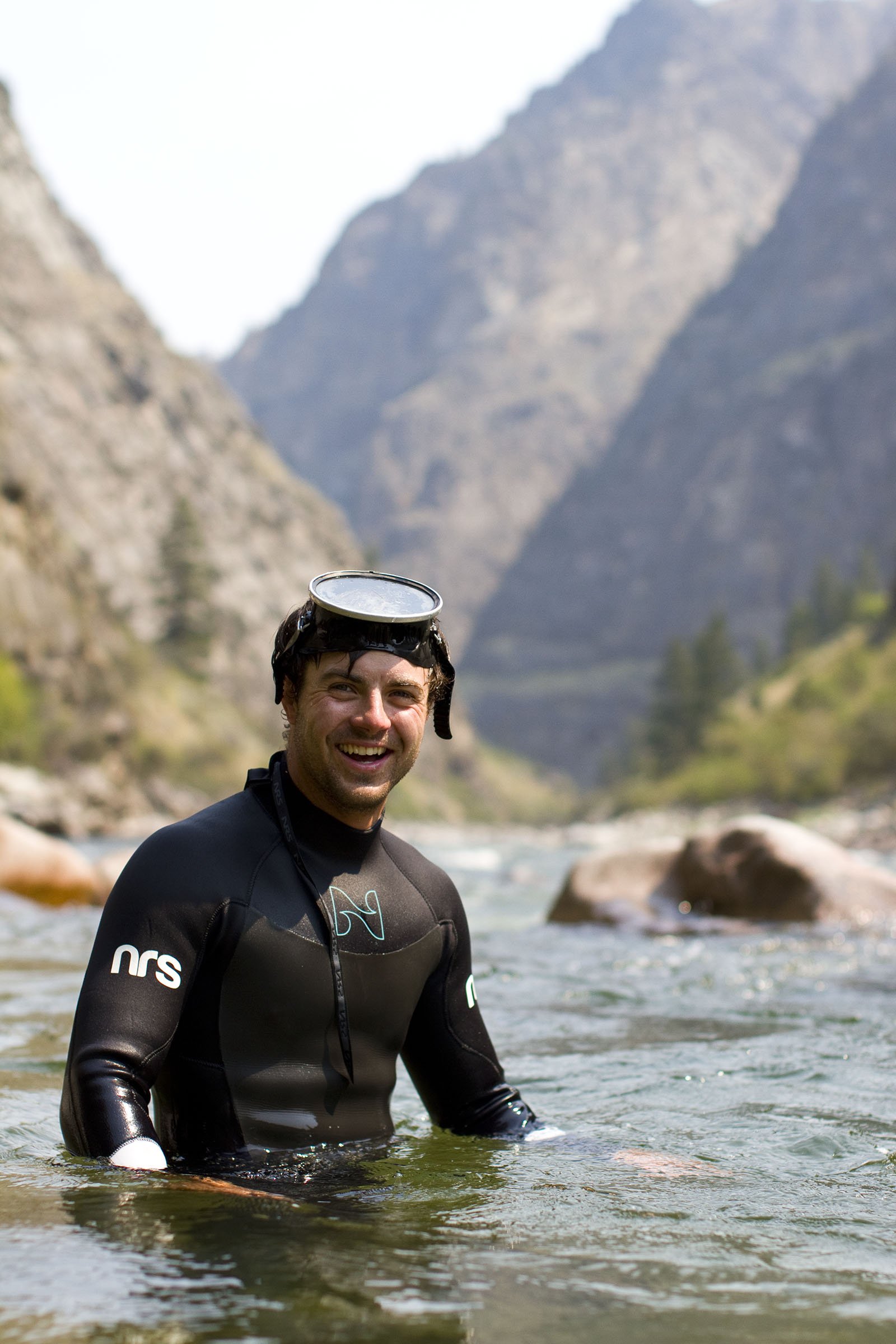
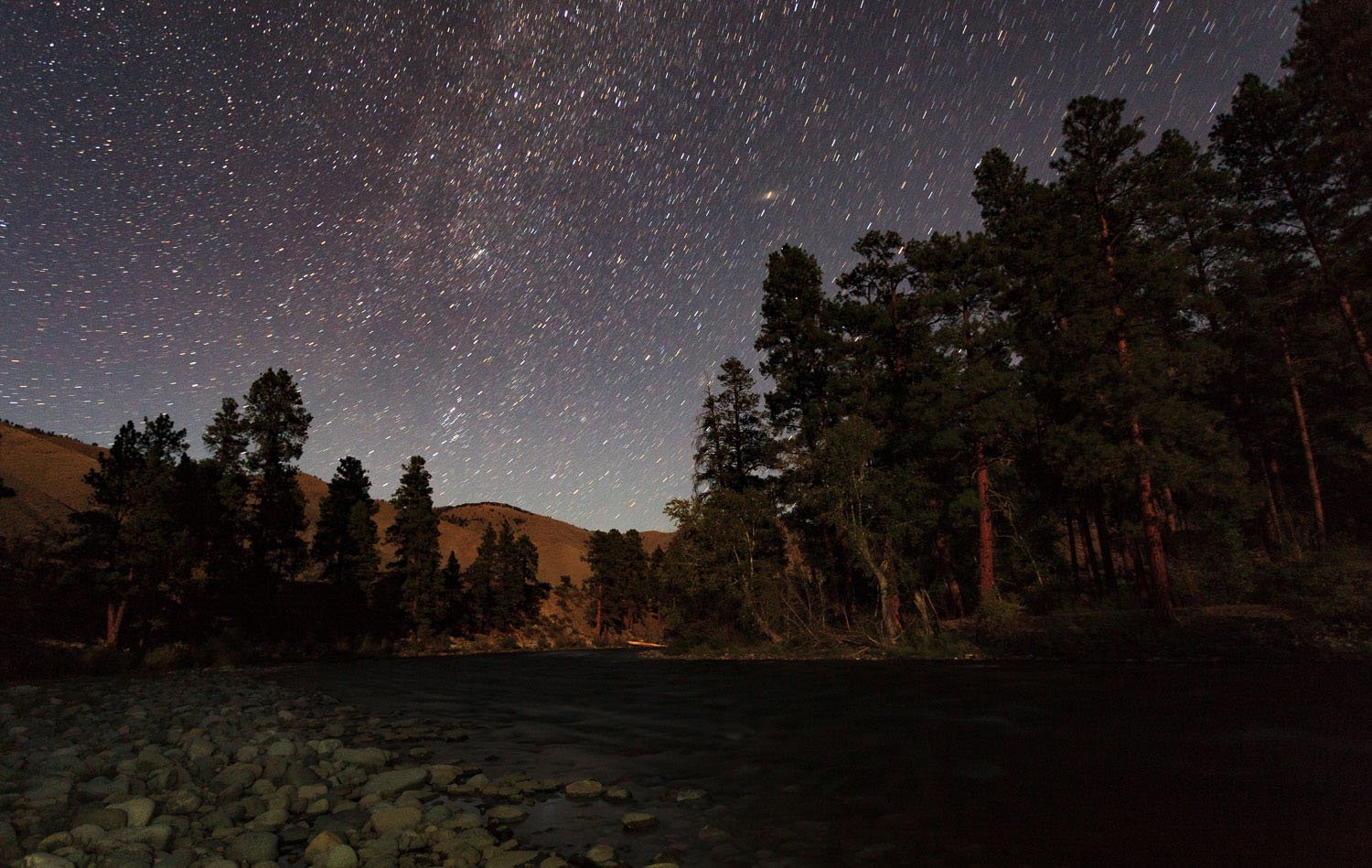
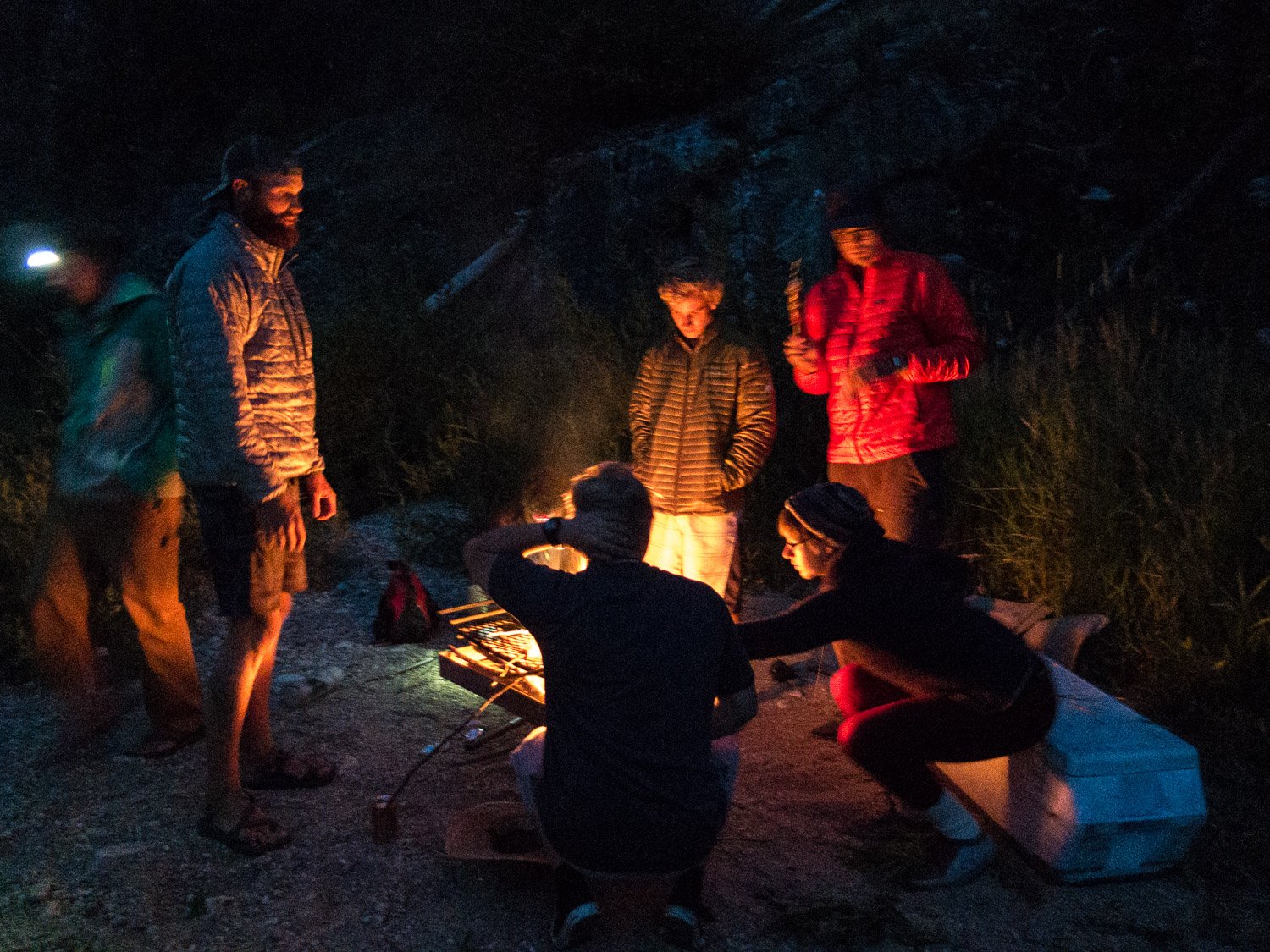
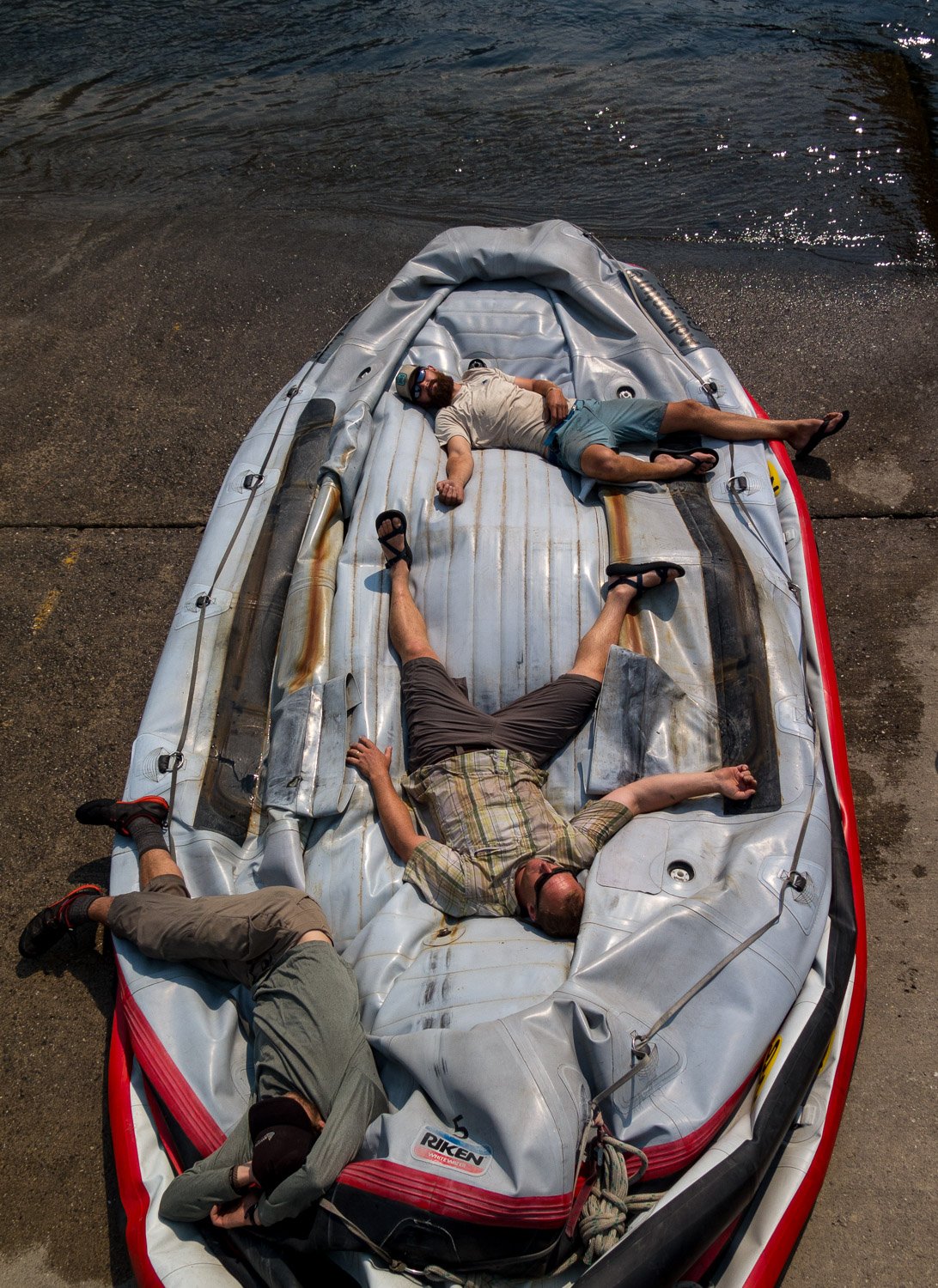

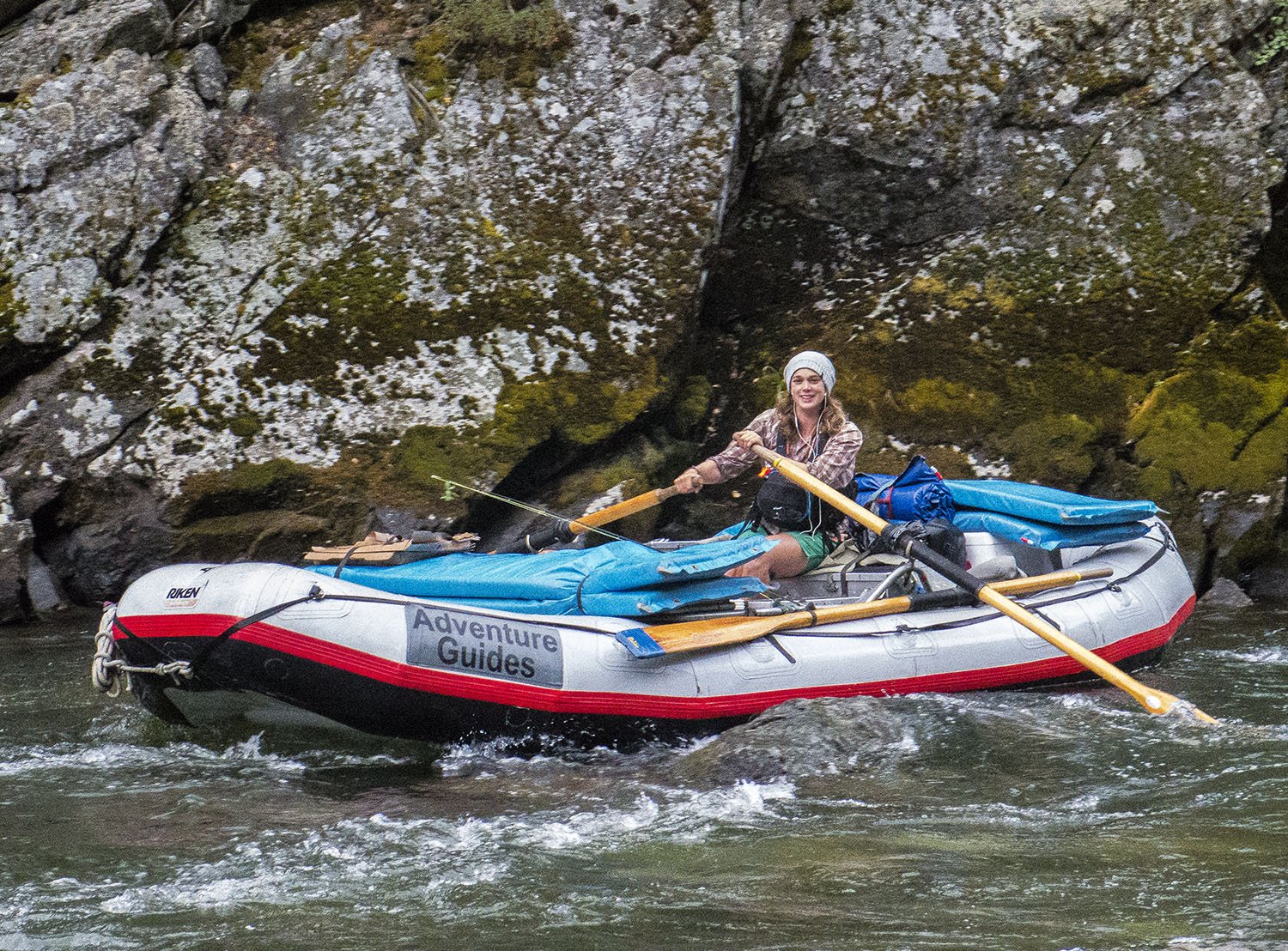
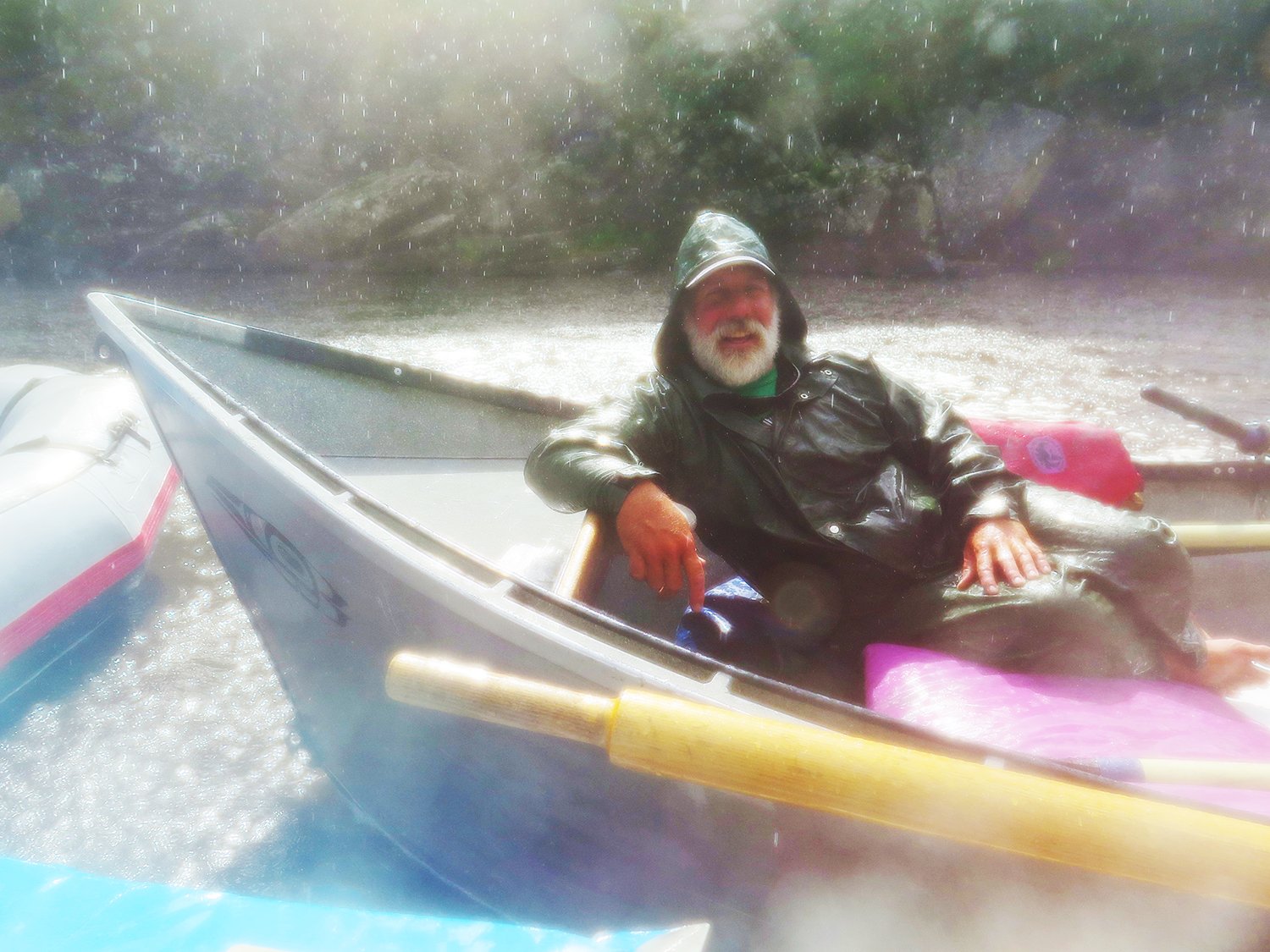
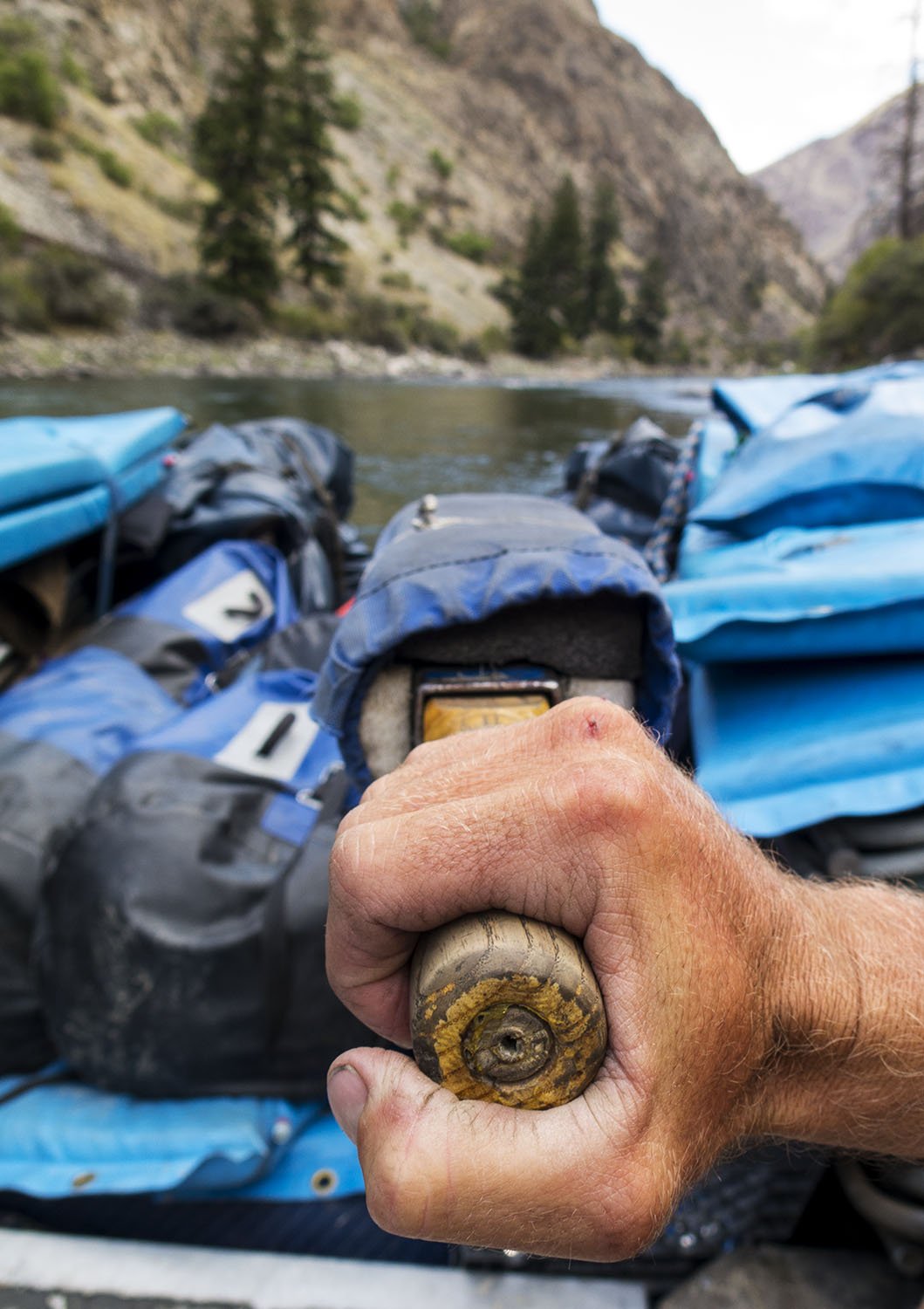
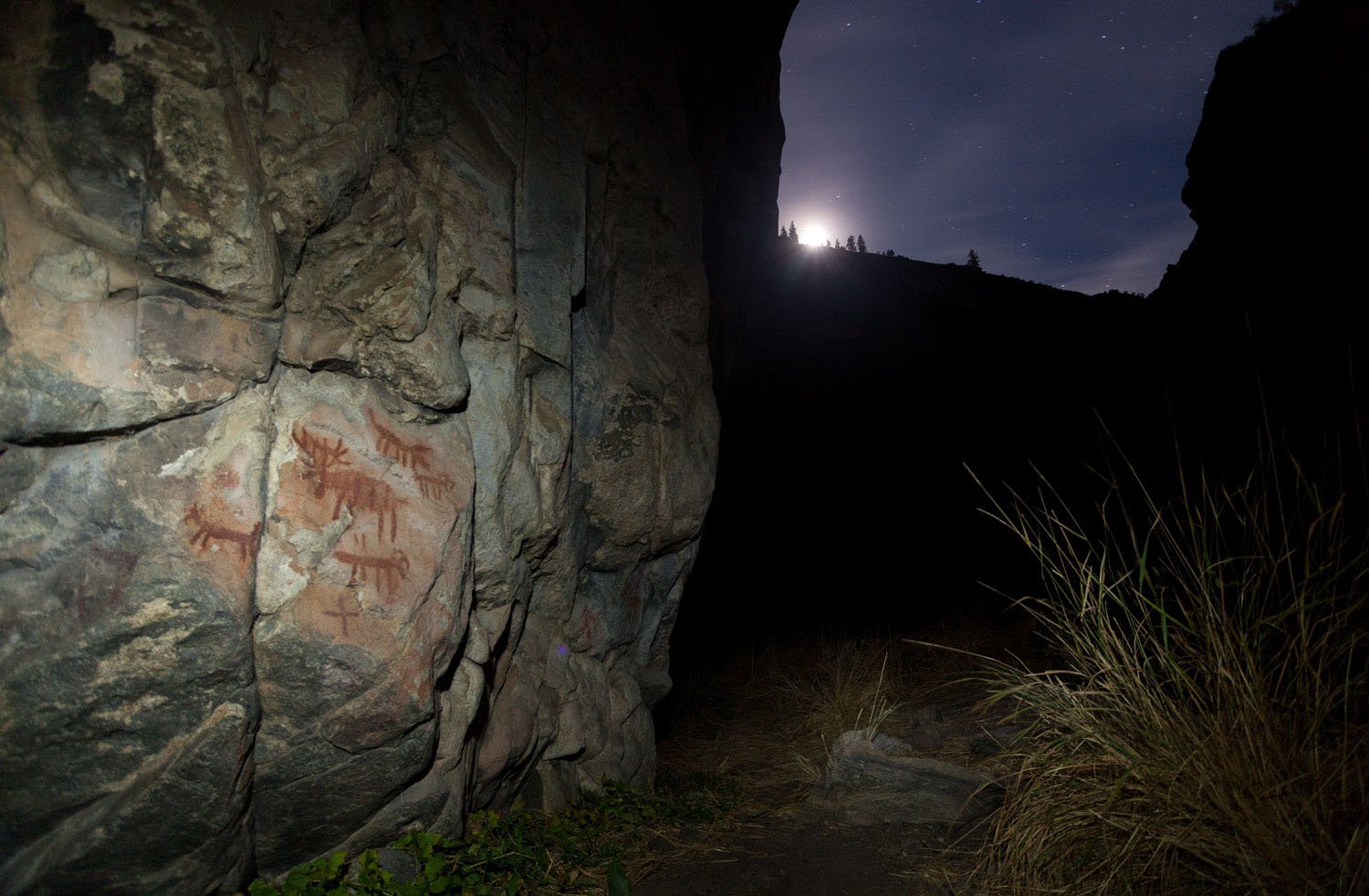
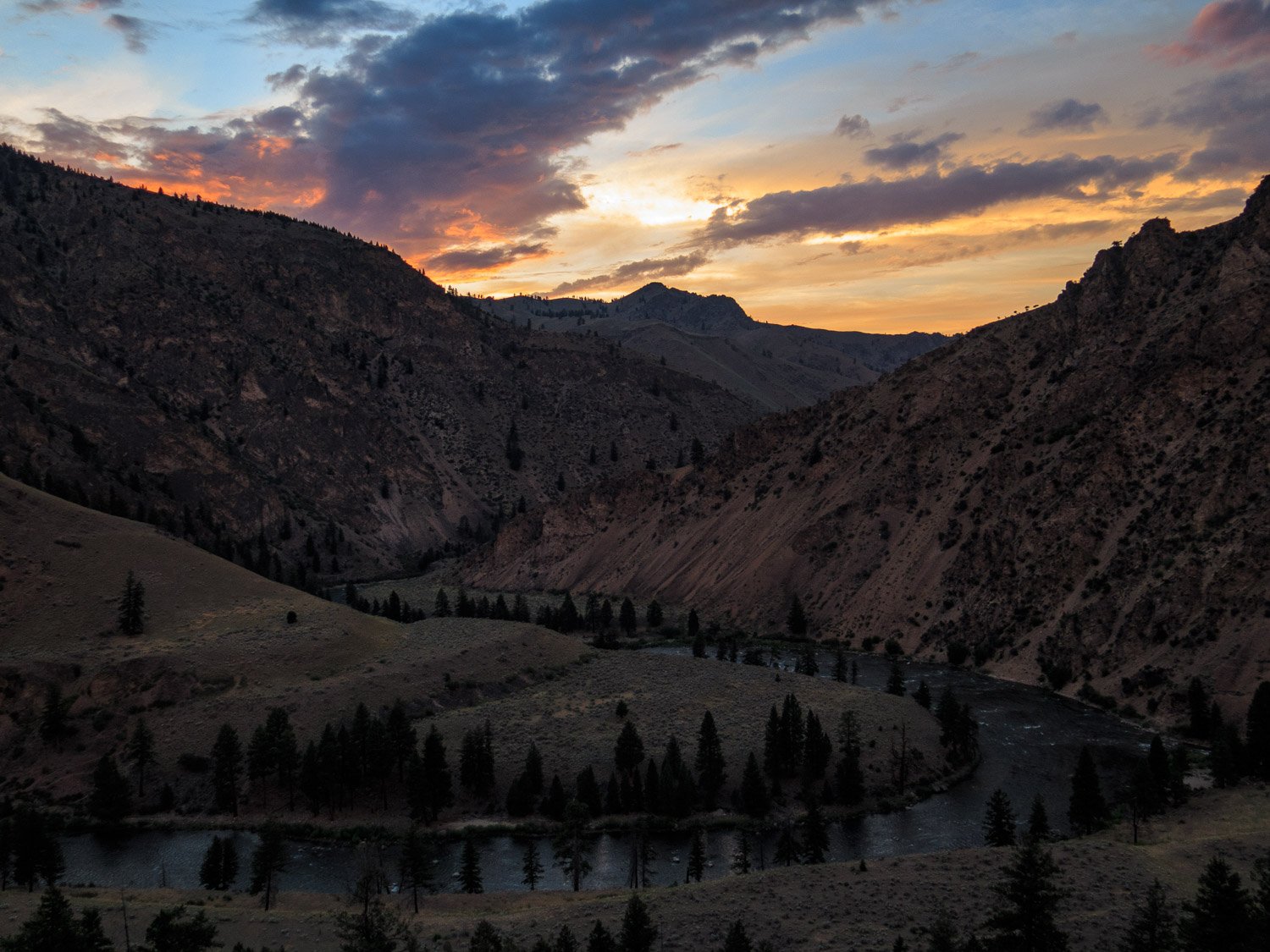
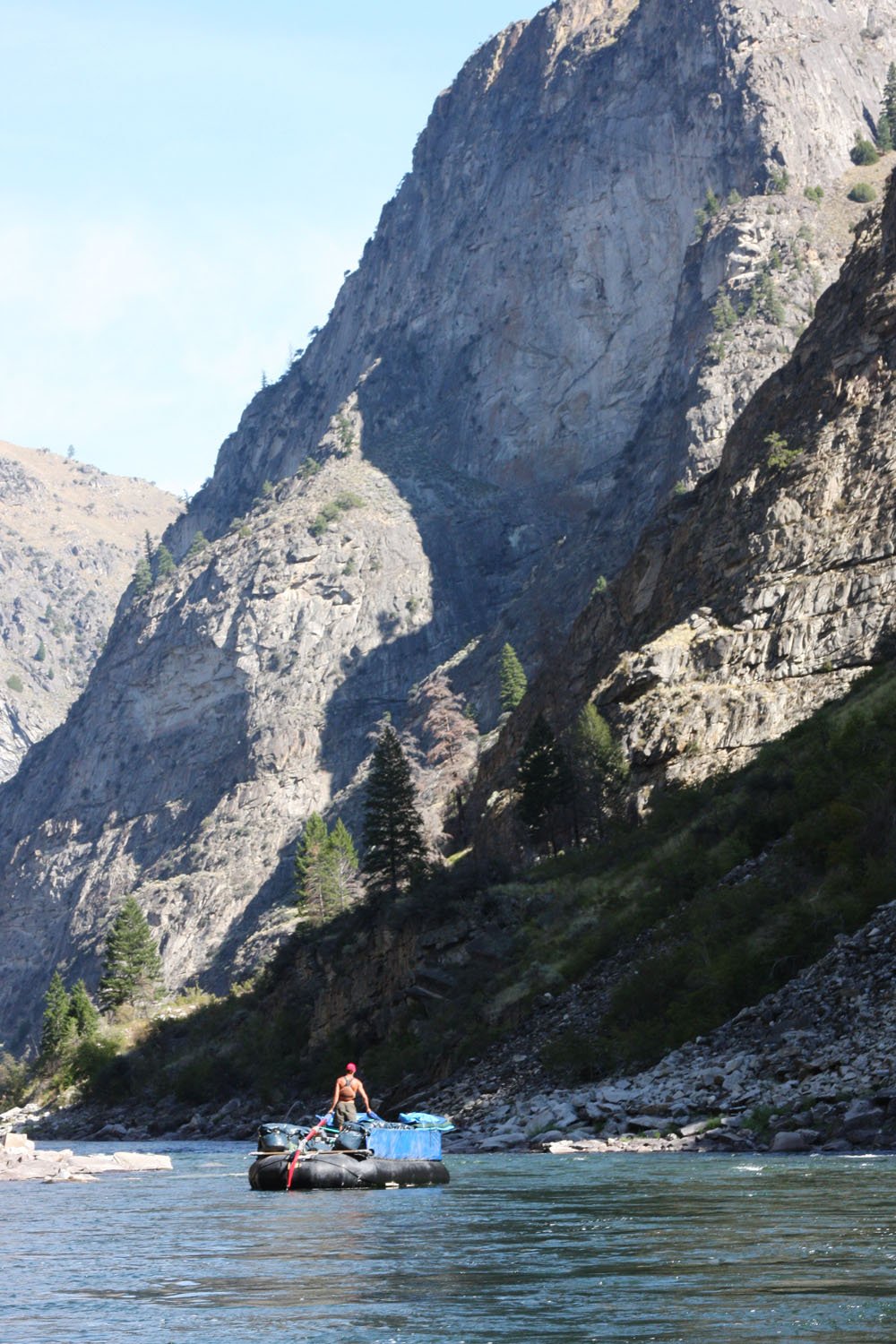
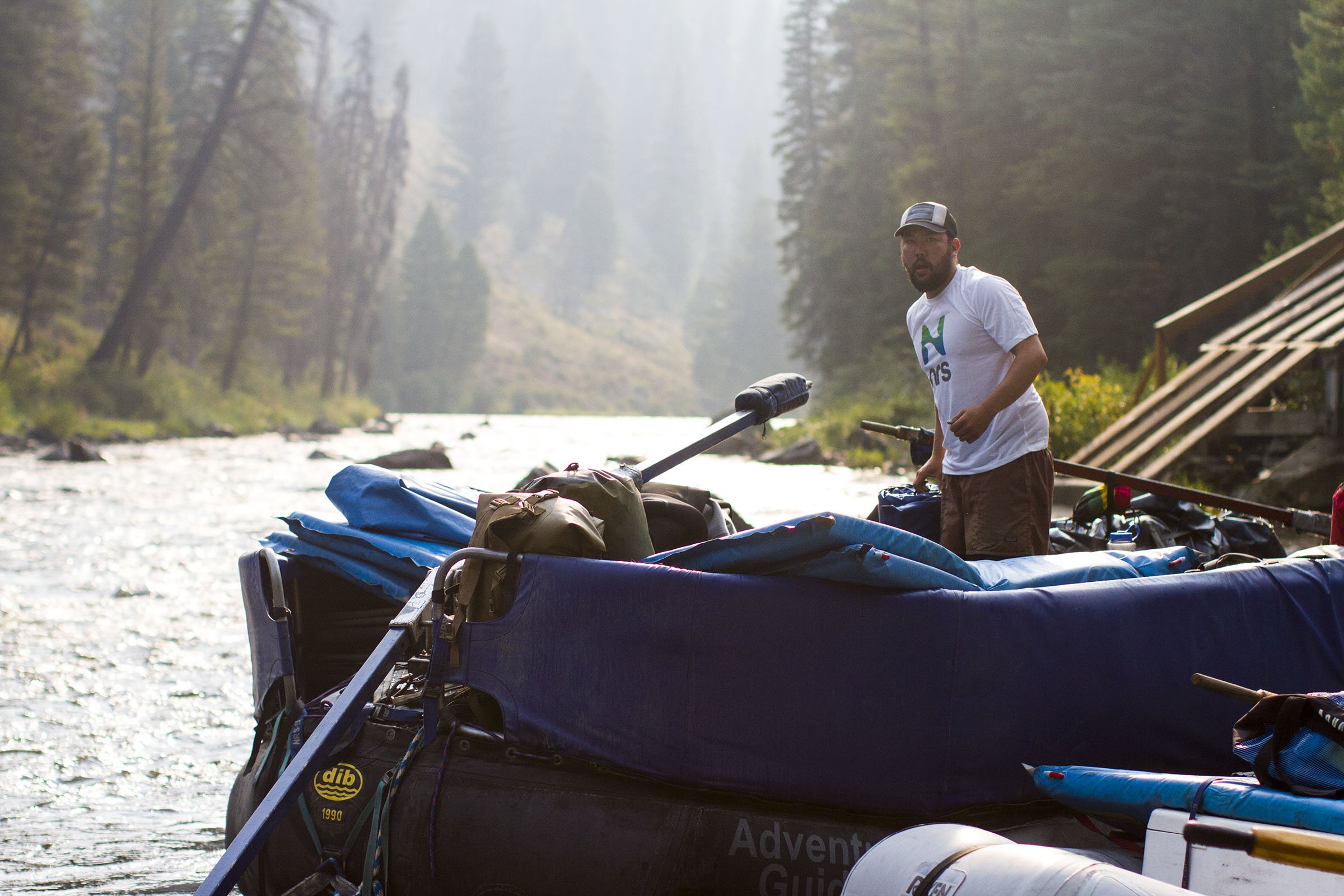
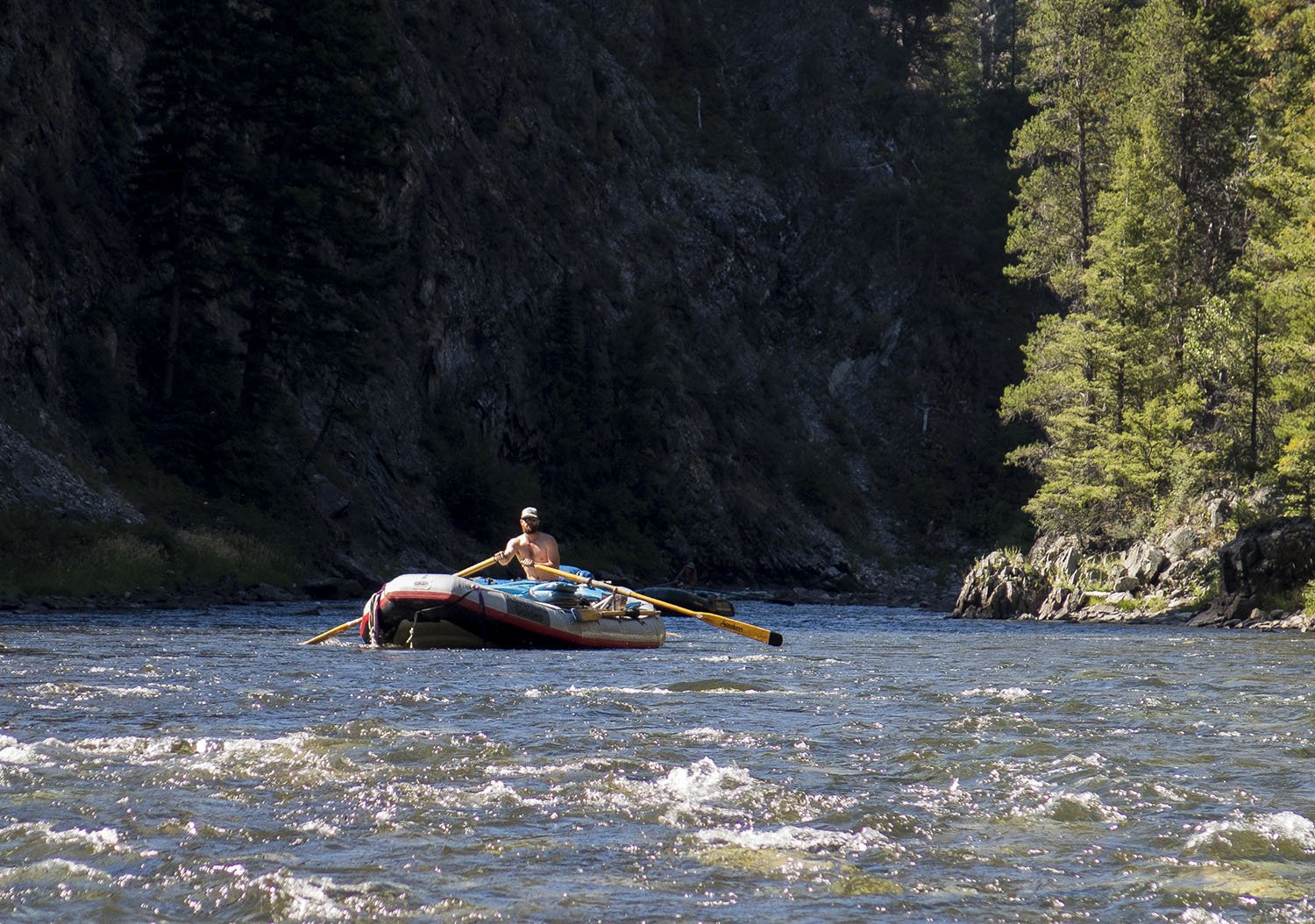

“I will sleep under the stars and be filled with gratitude, forever thankful, for a community and a wild river that has carved its course through my life.”
